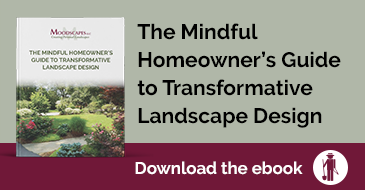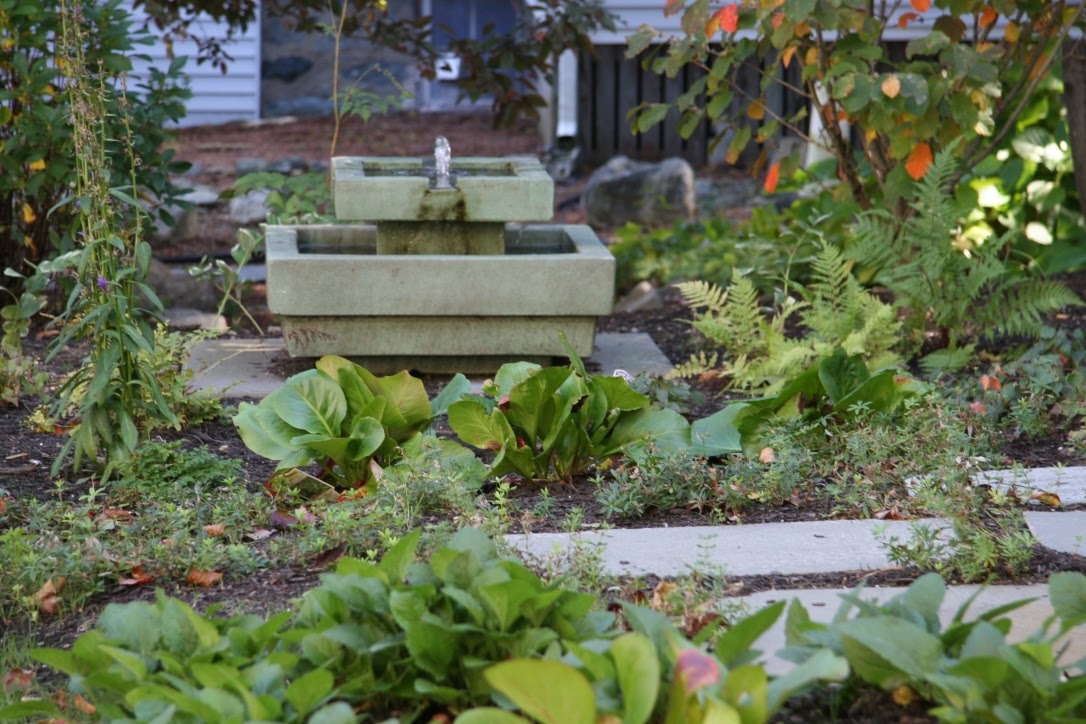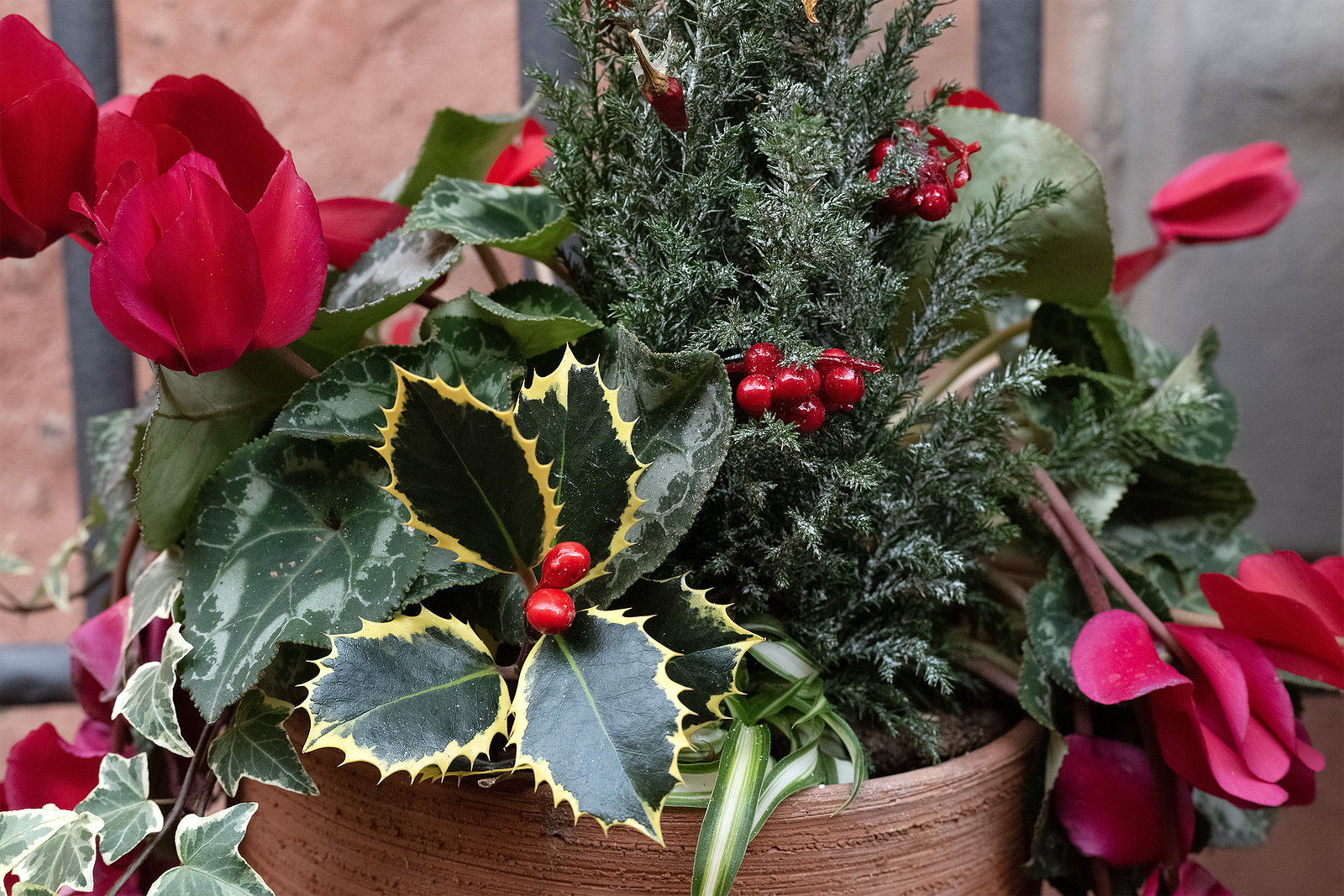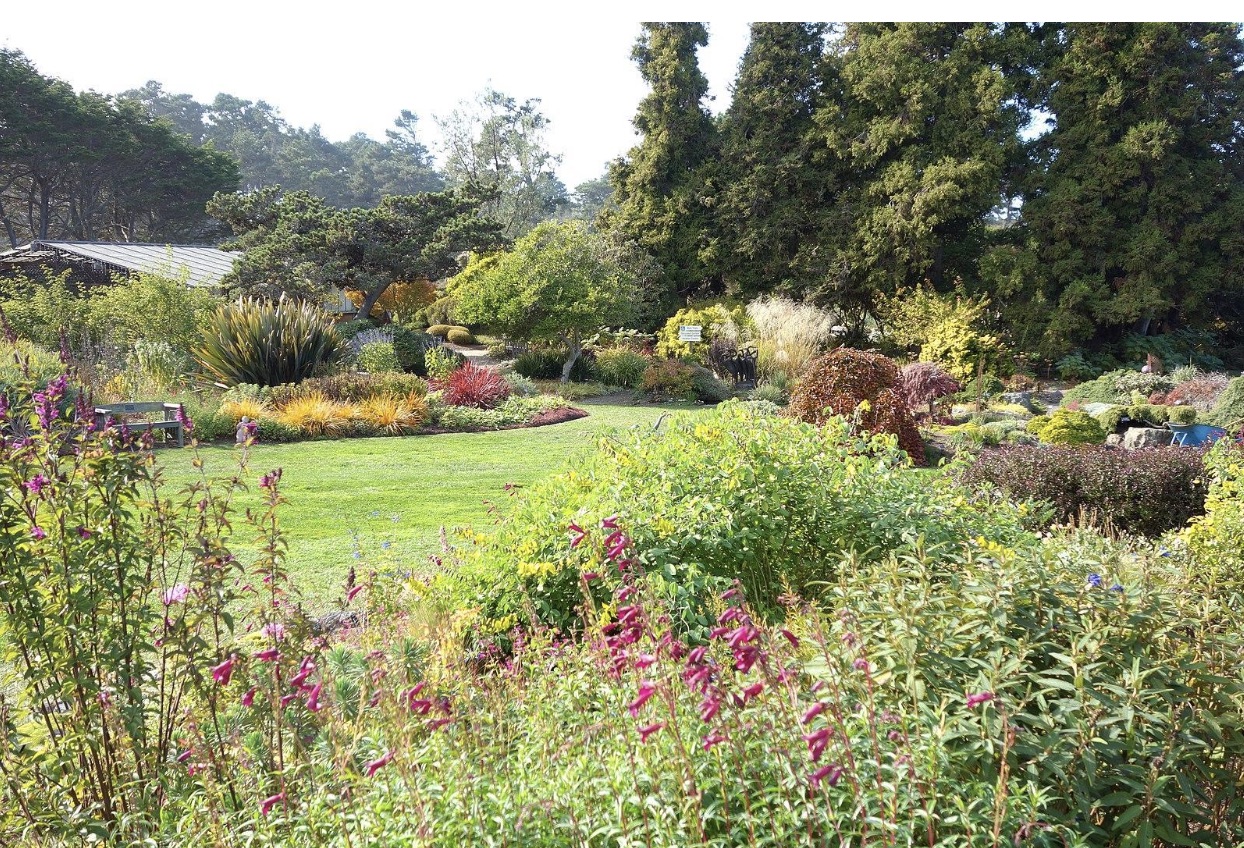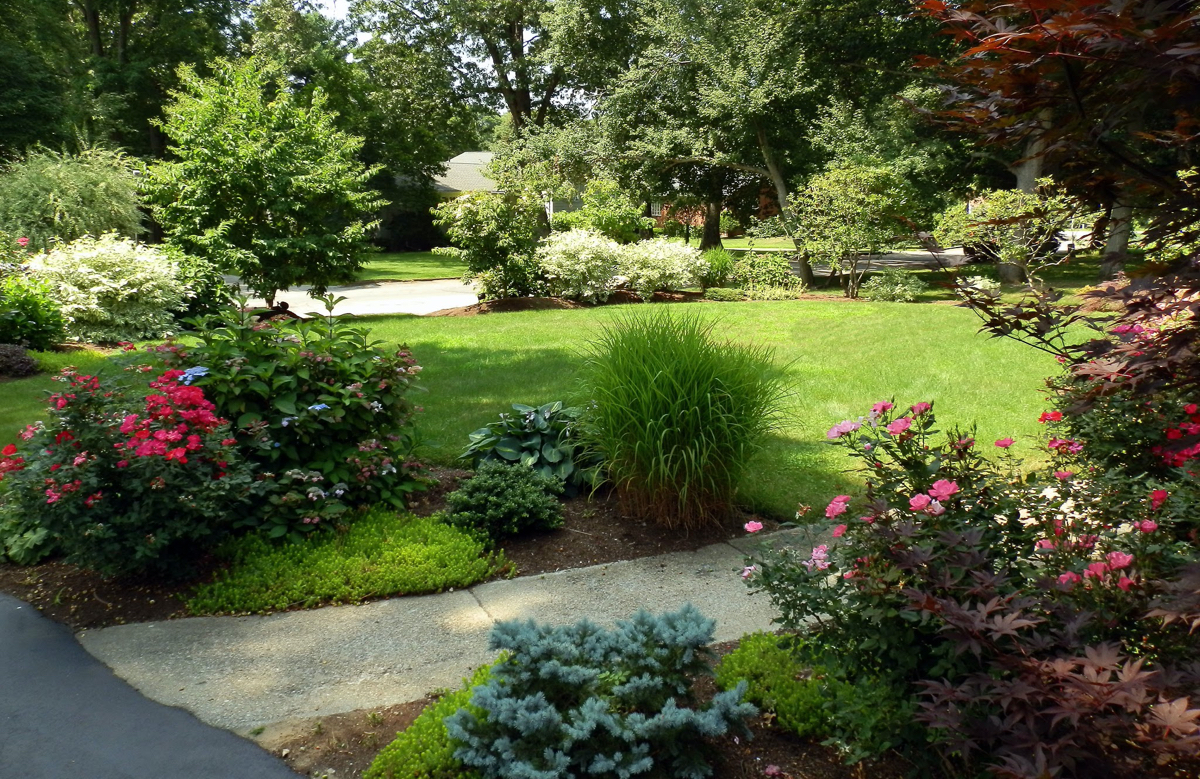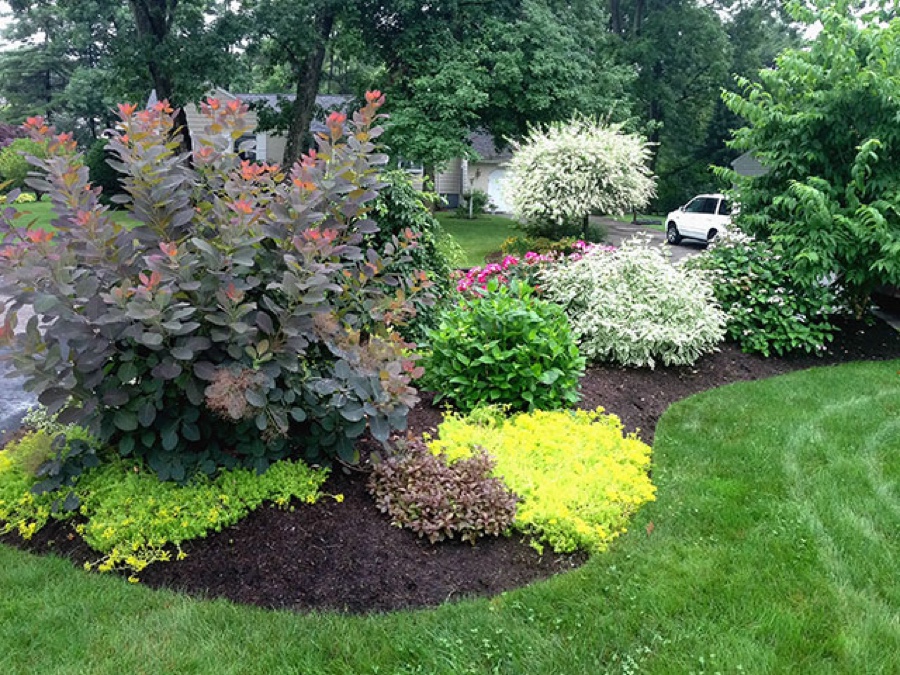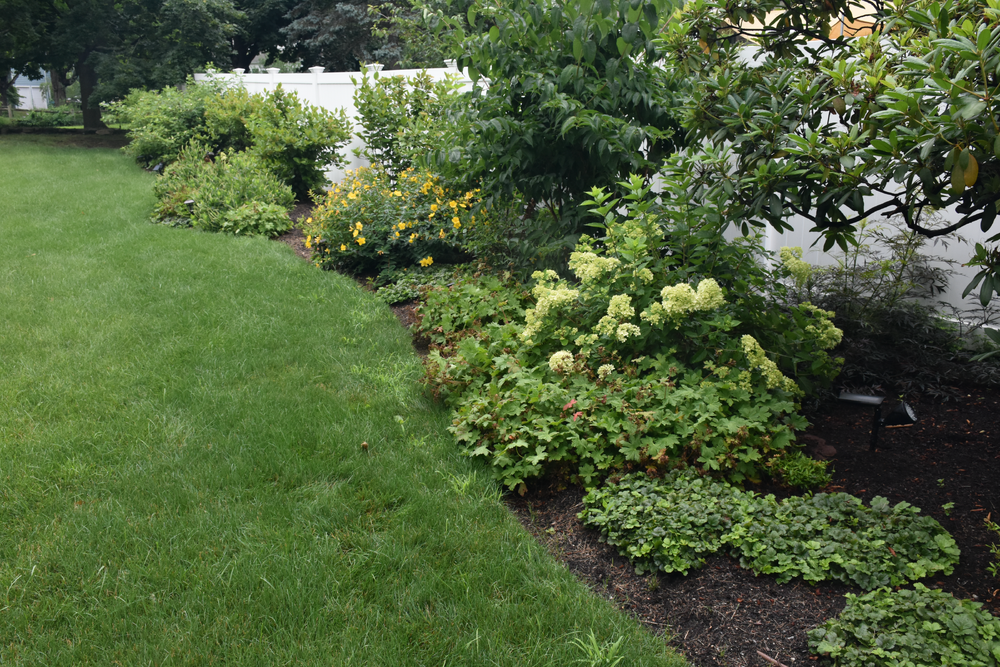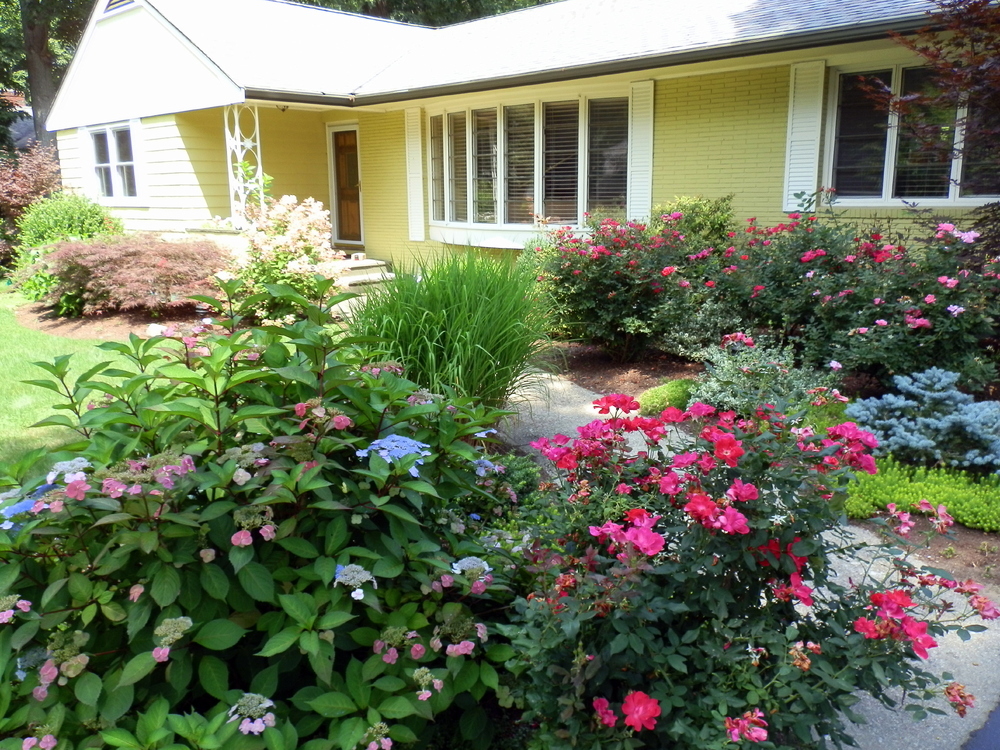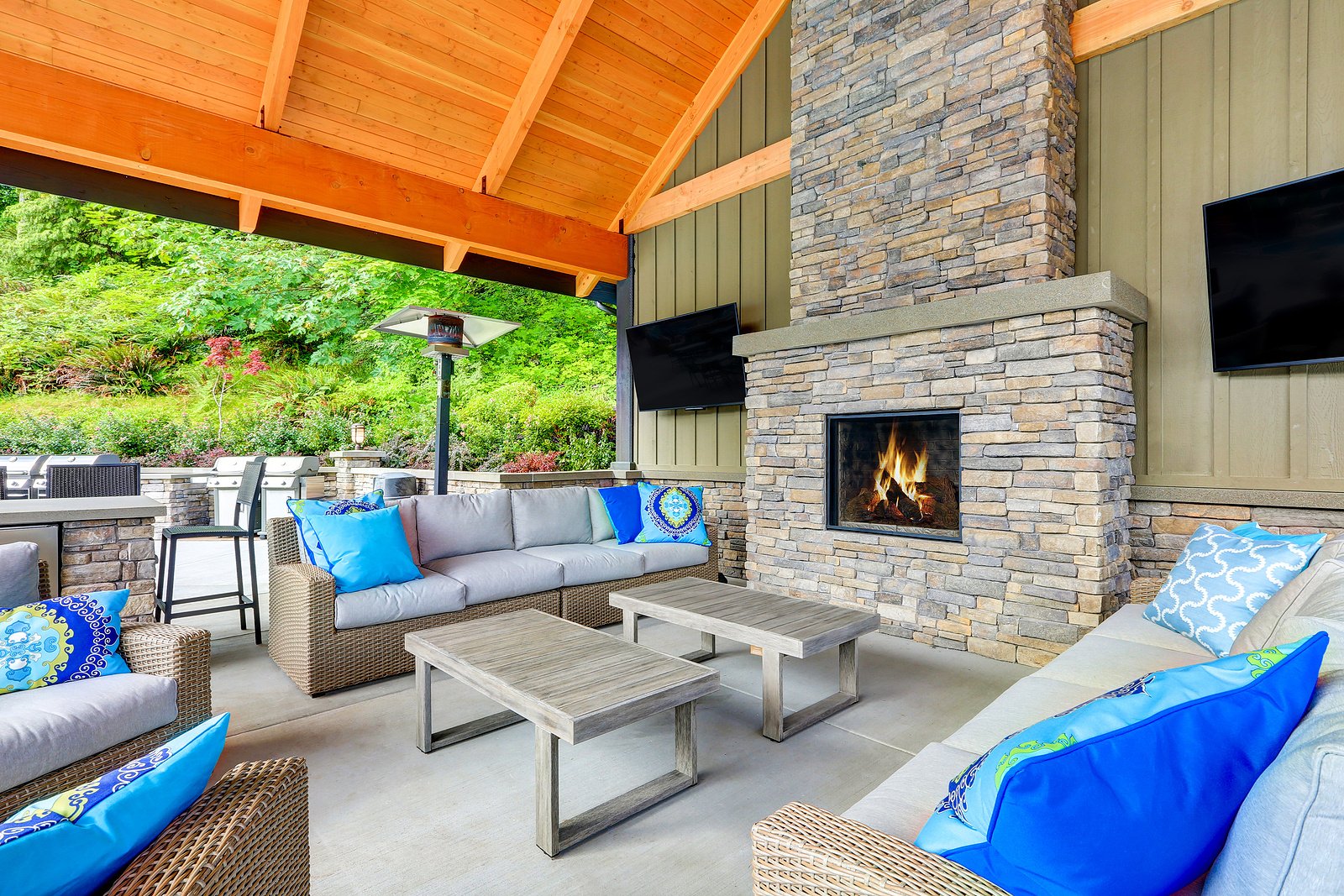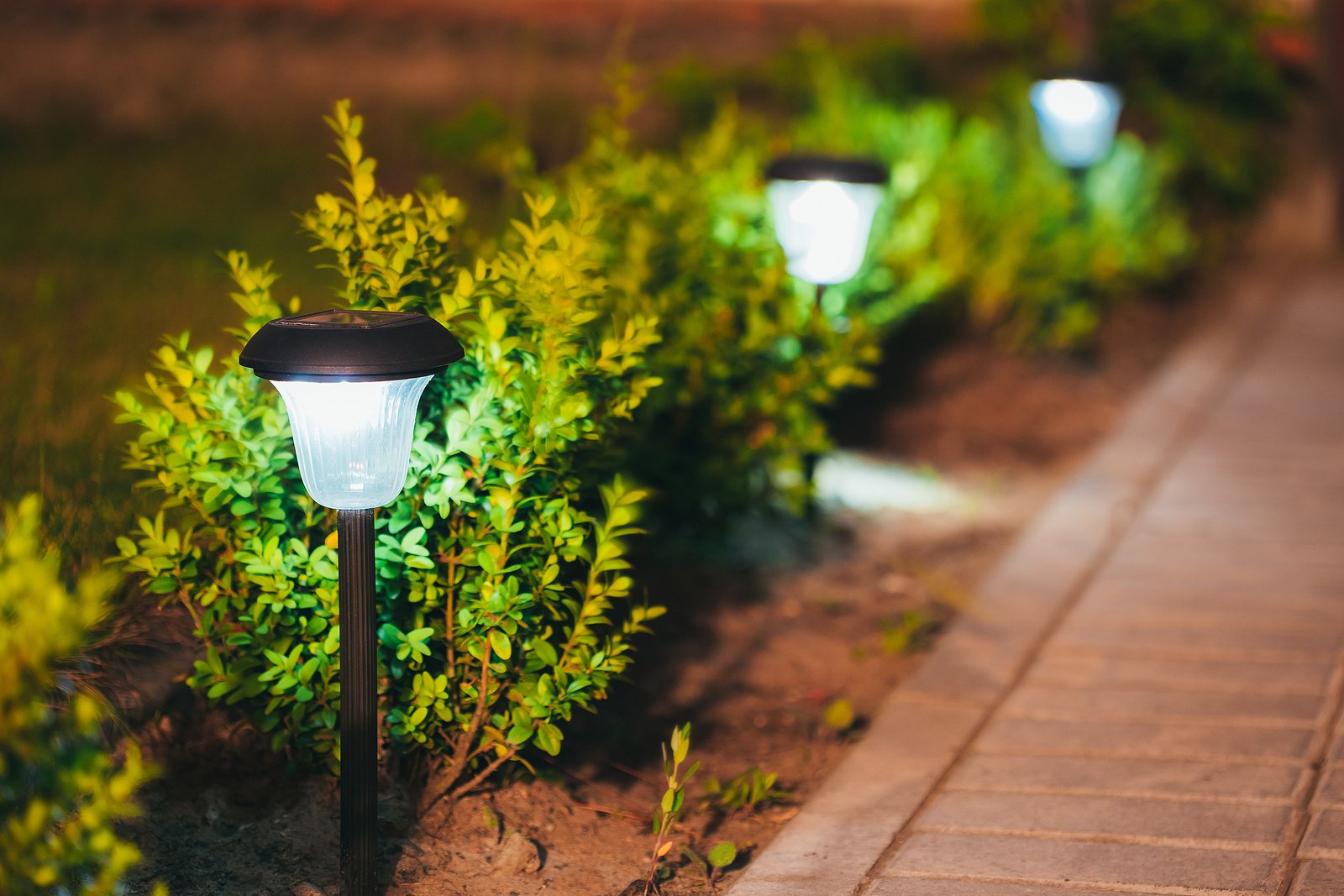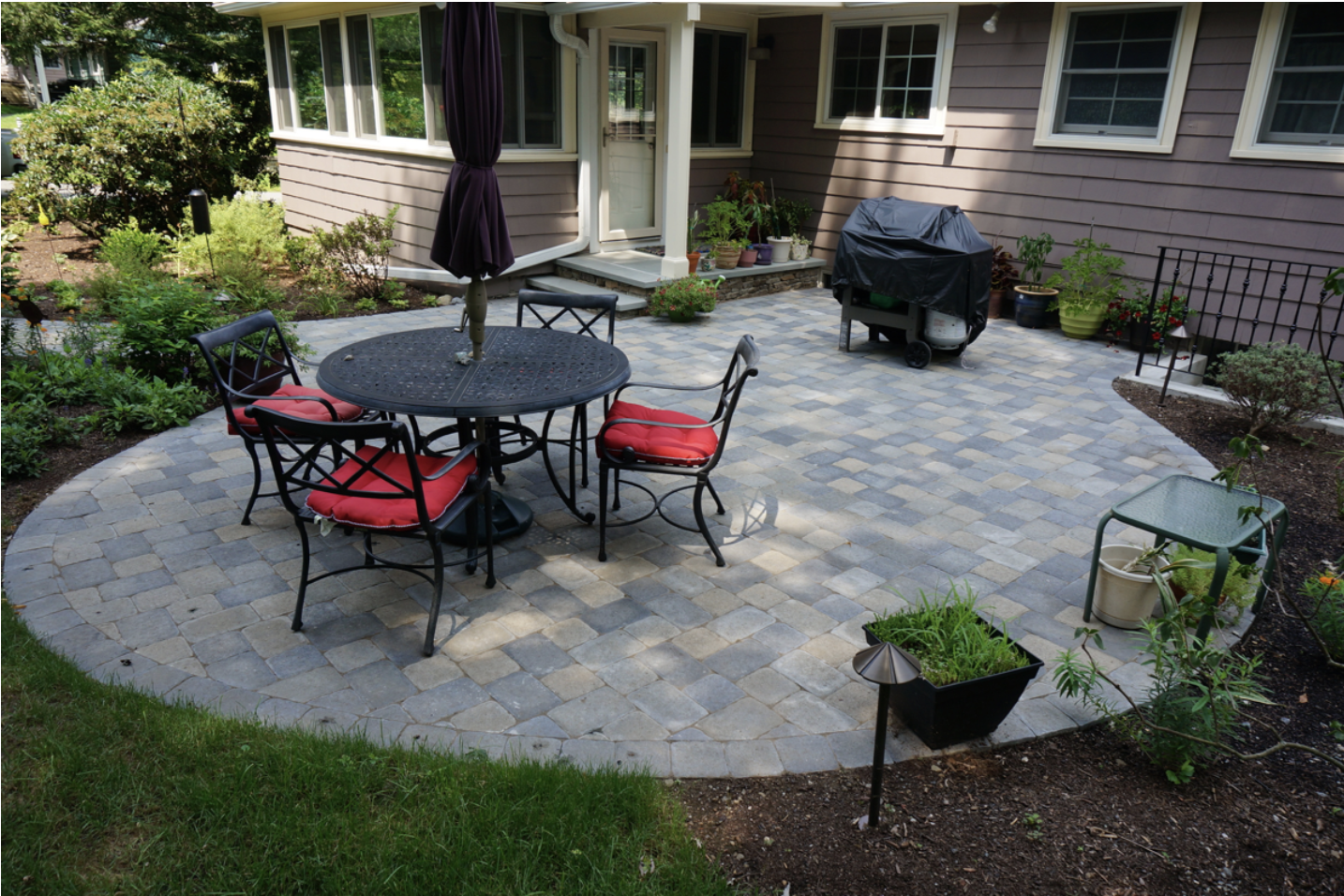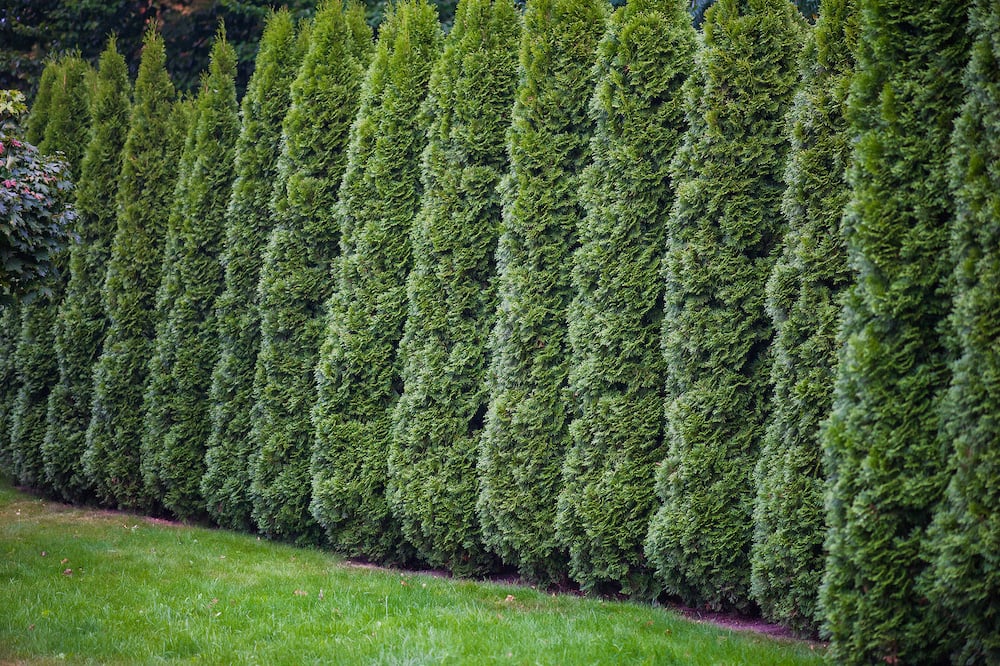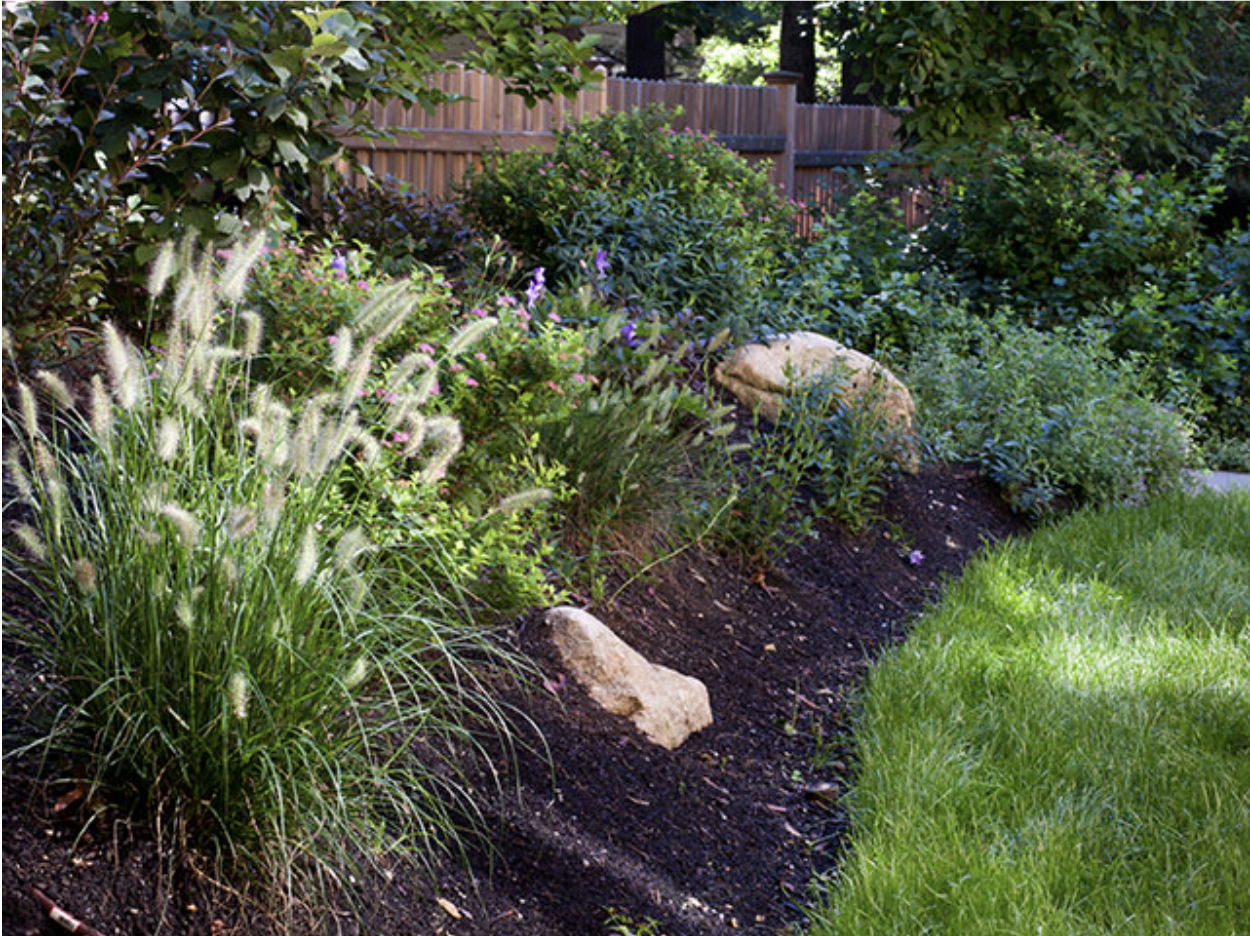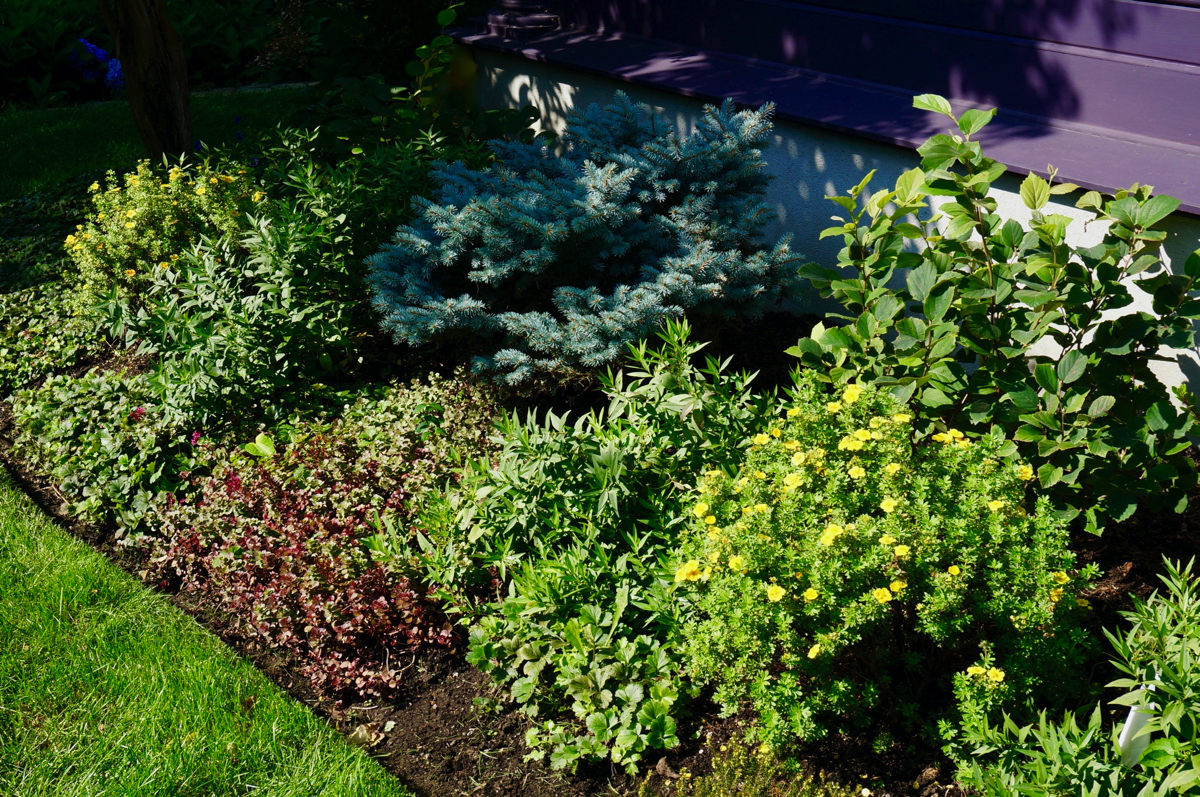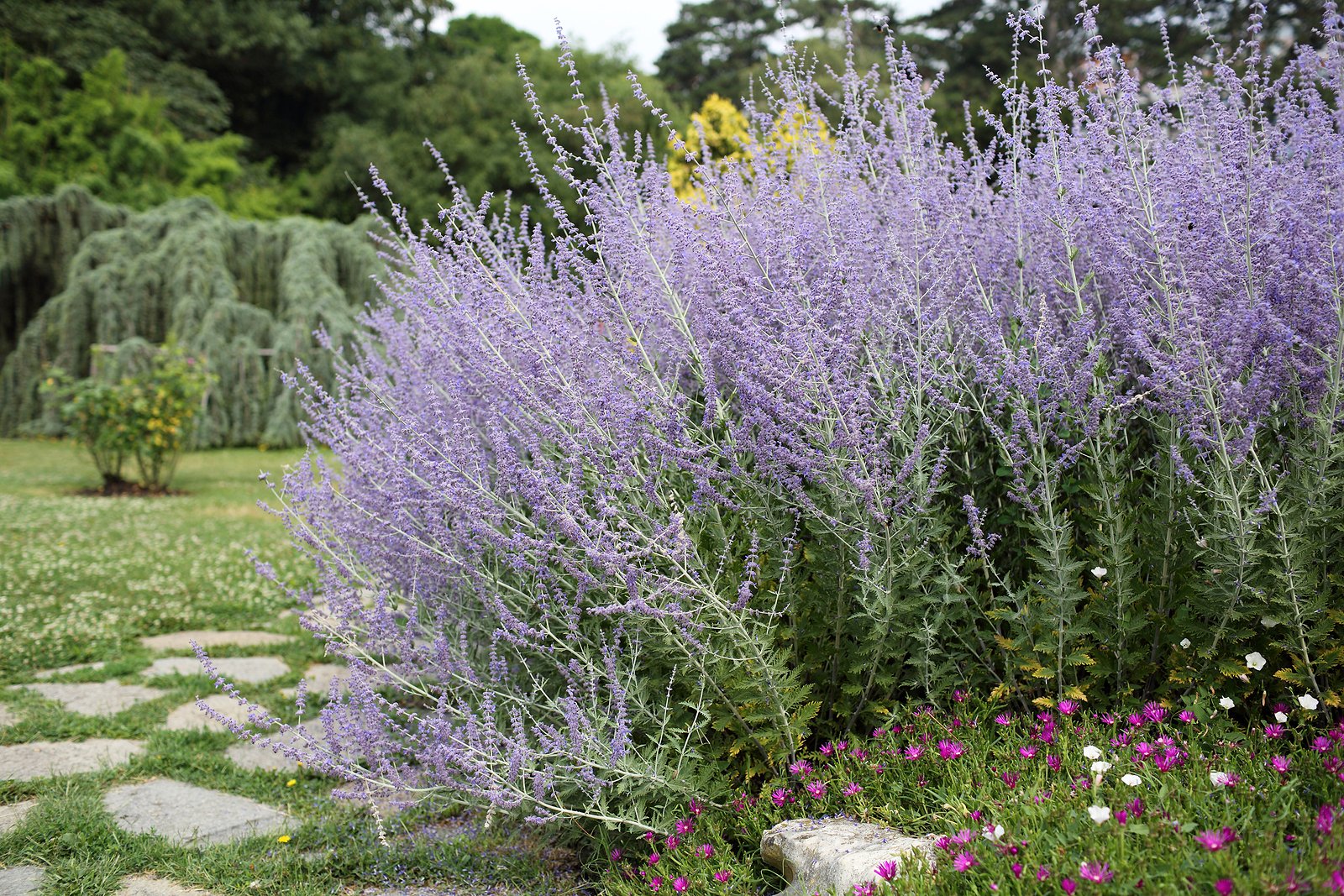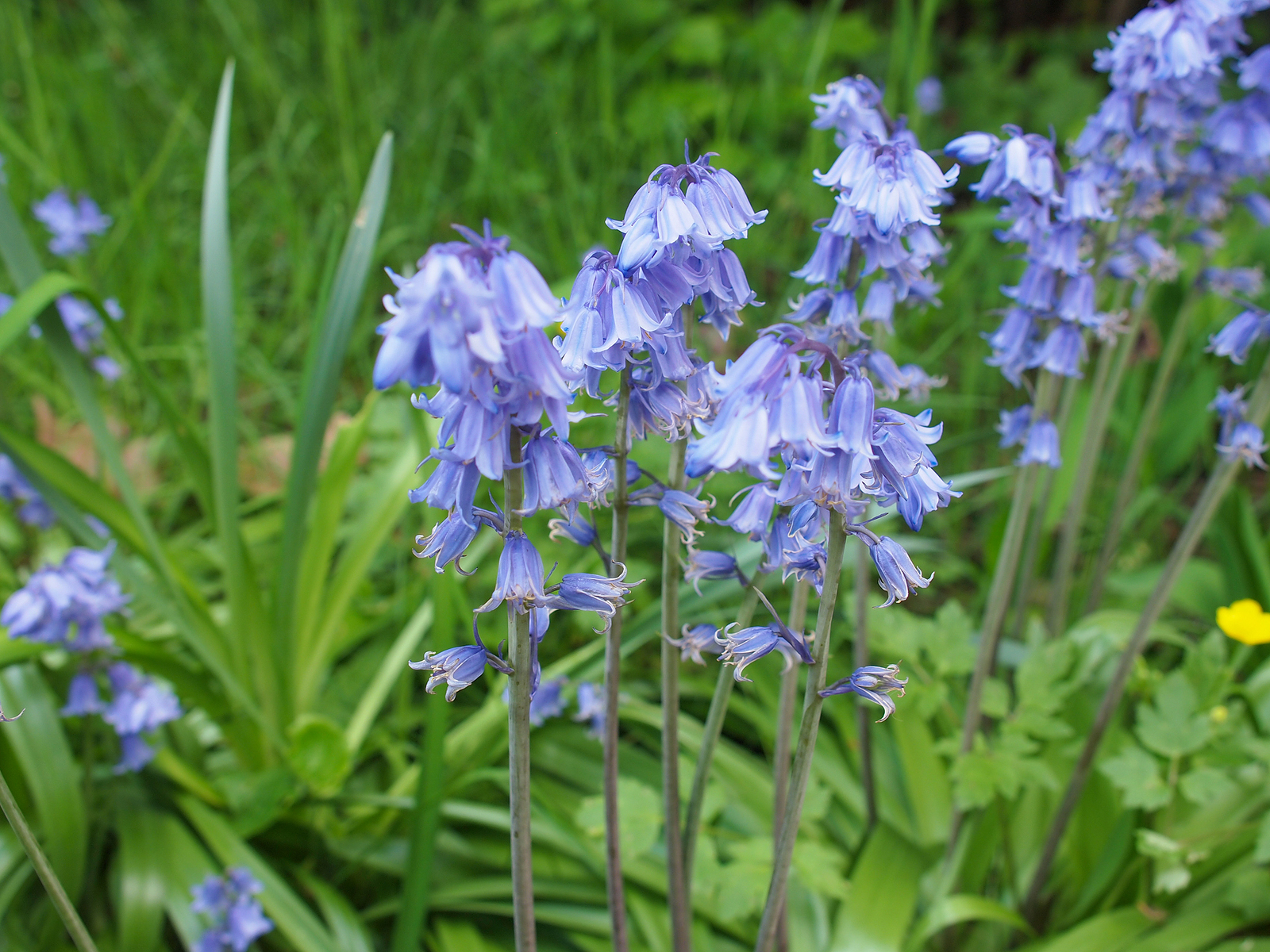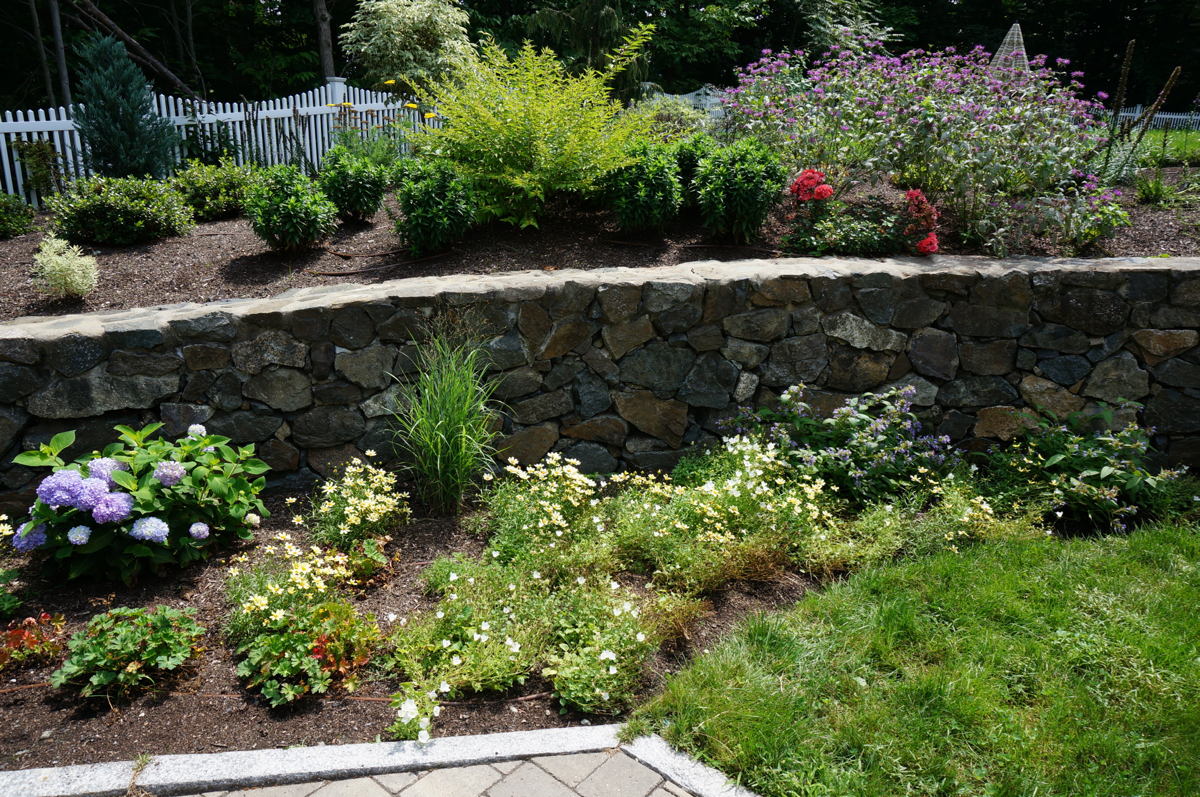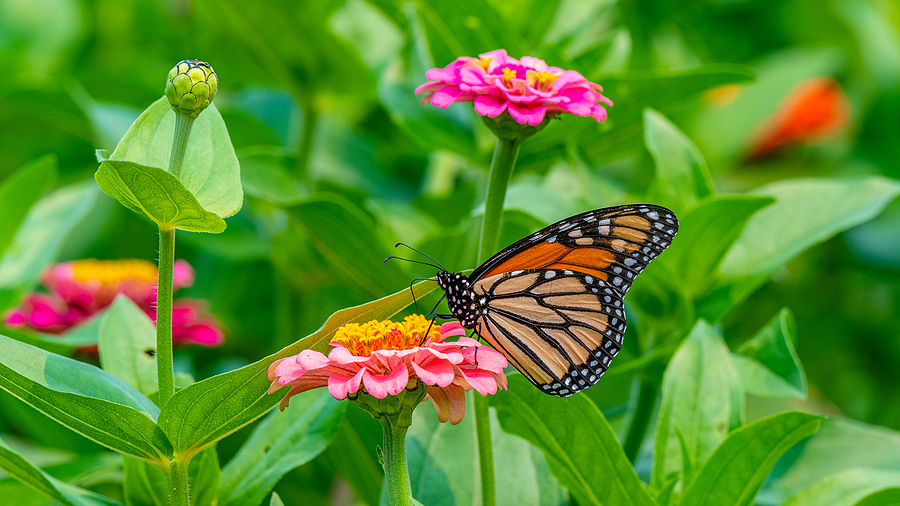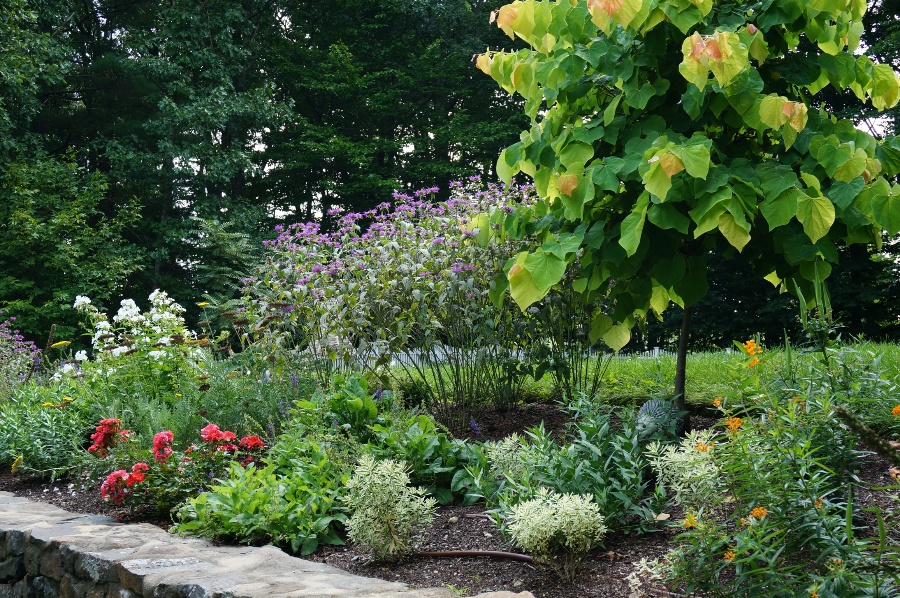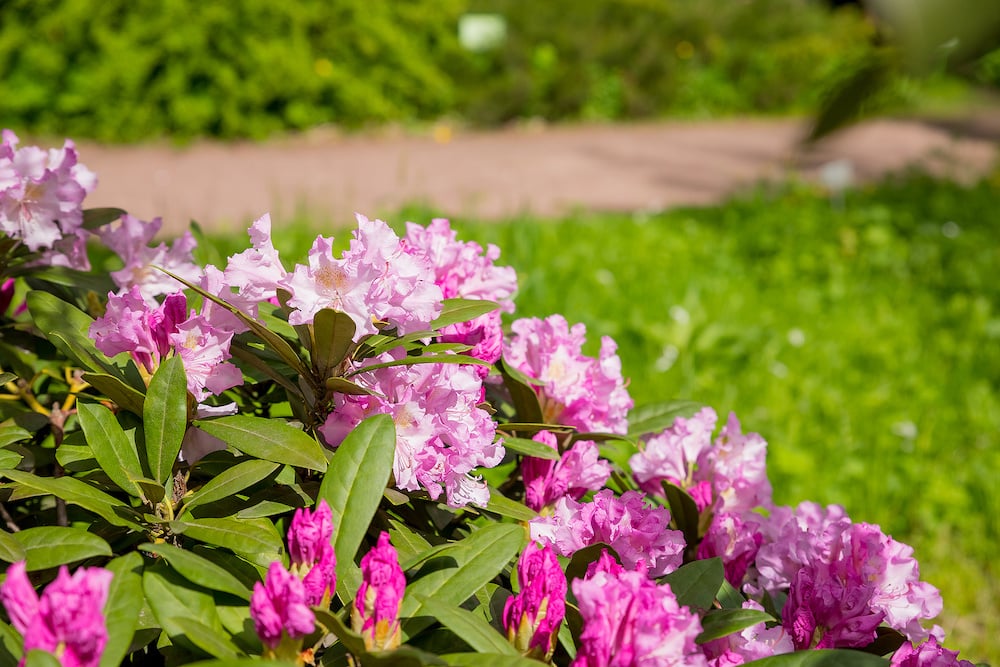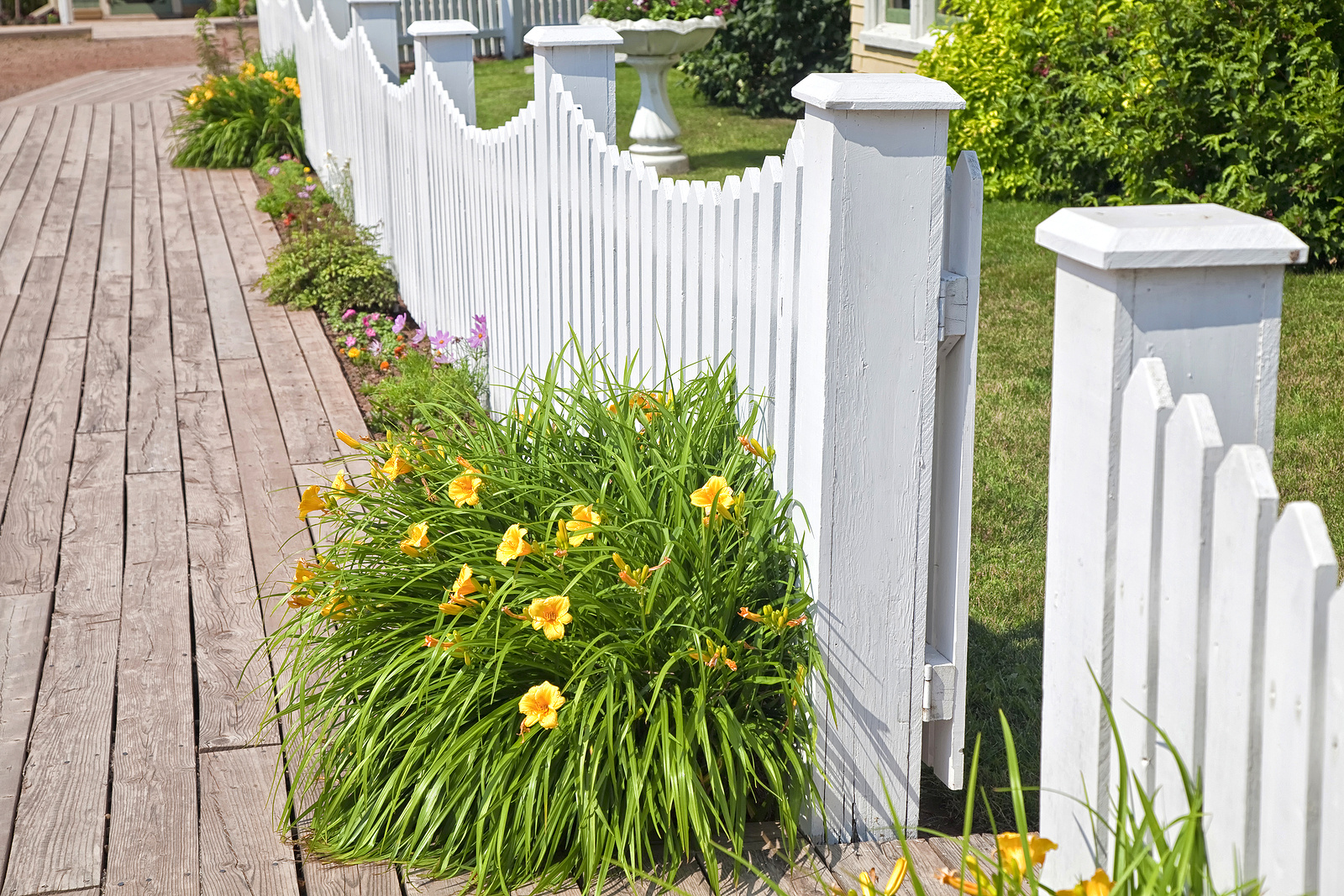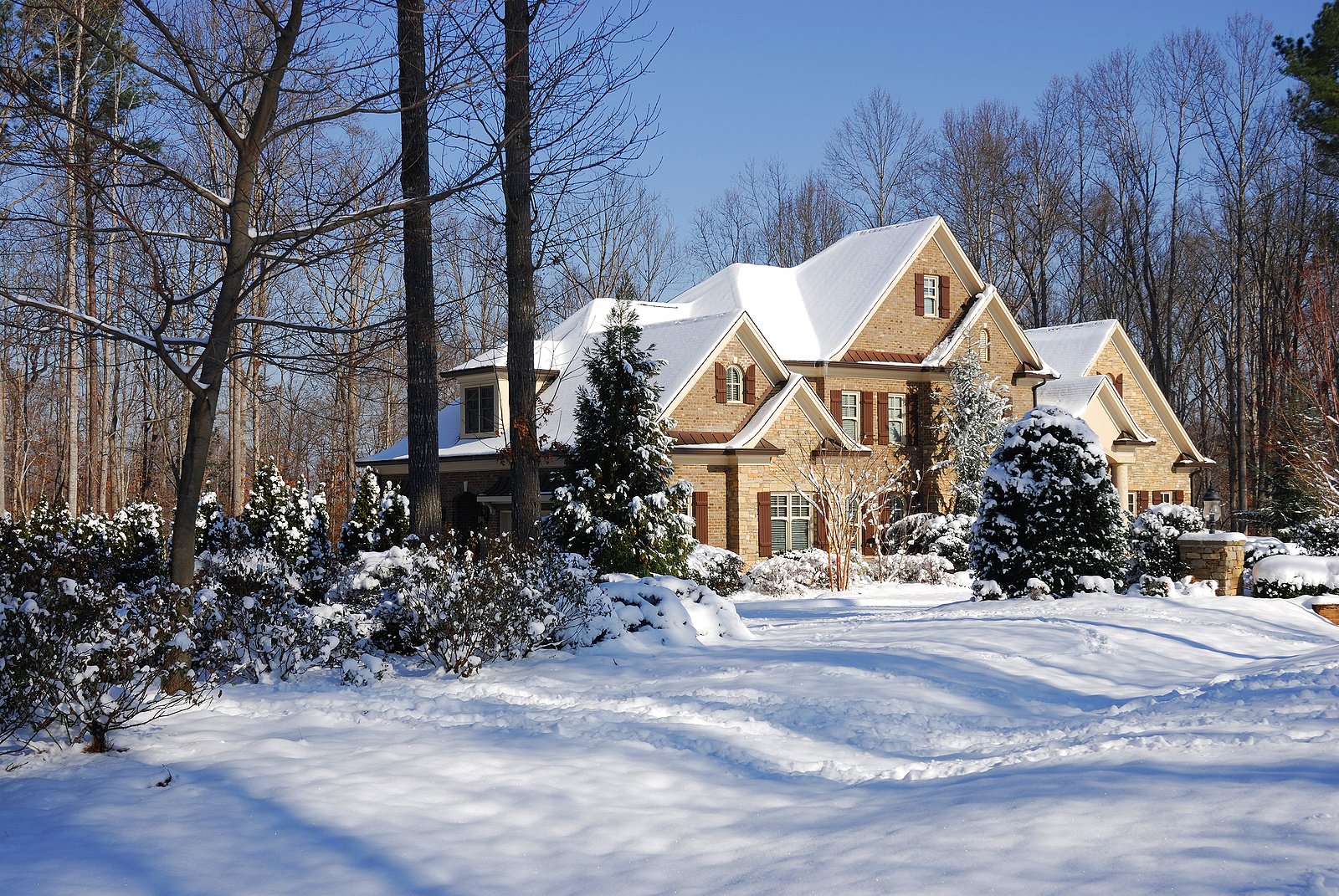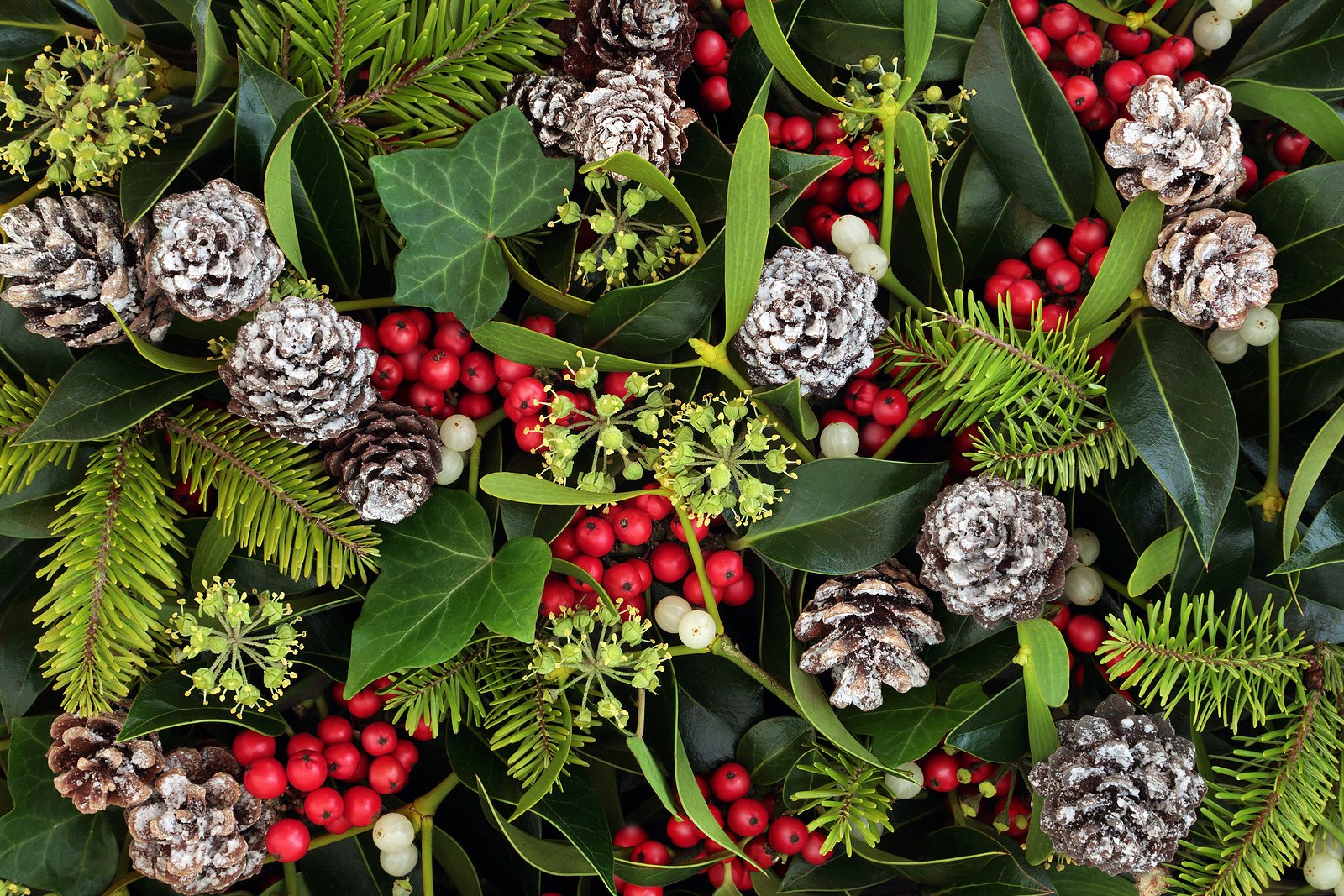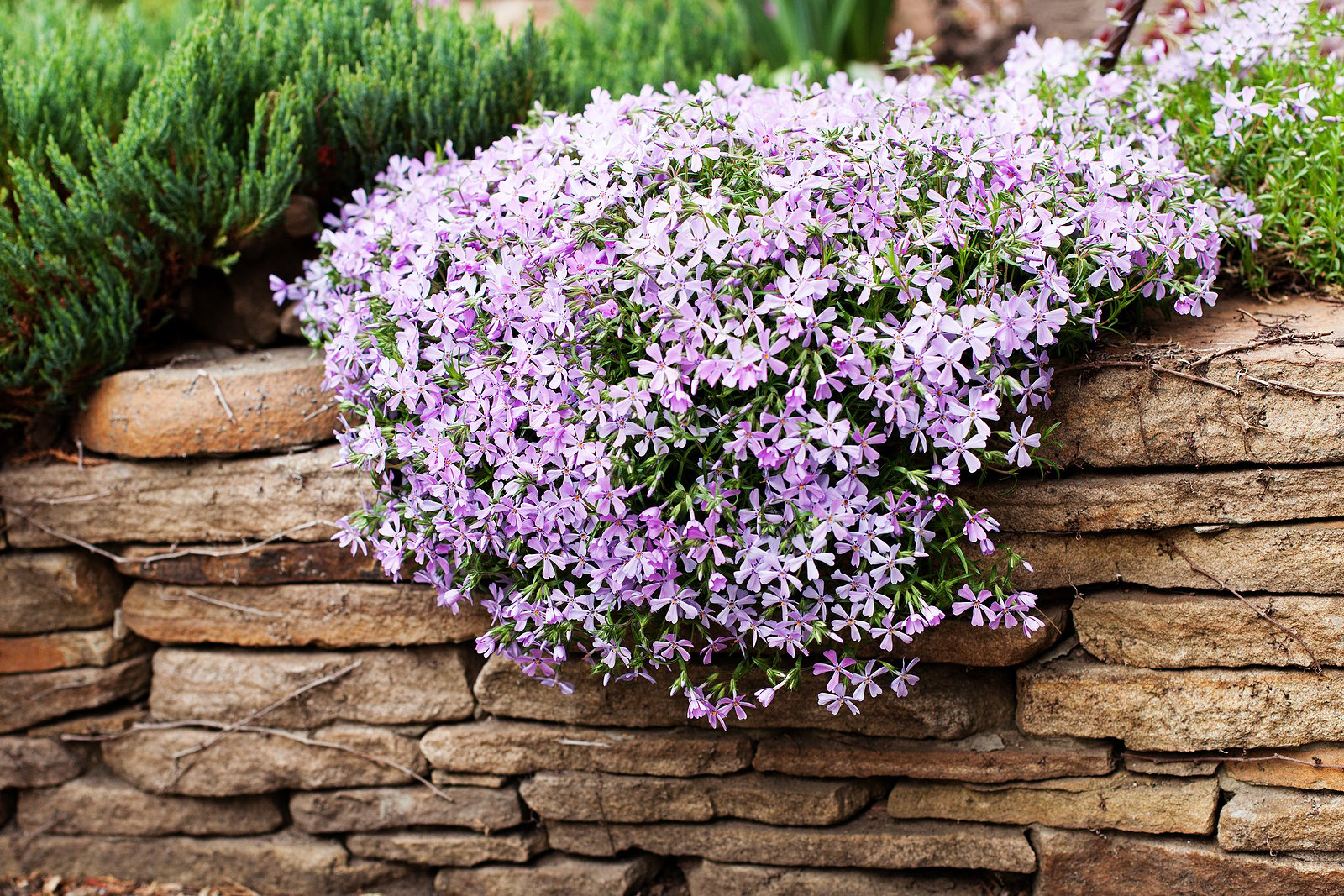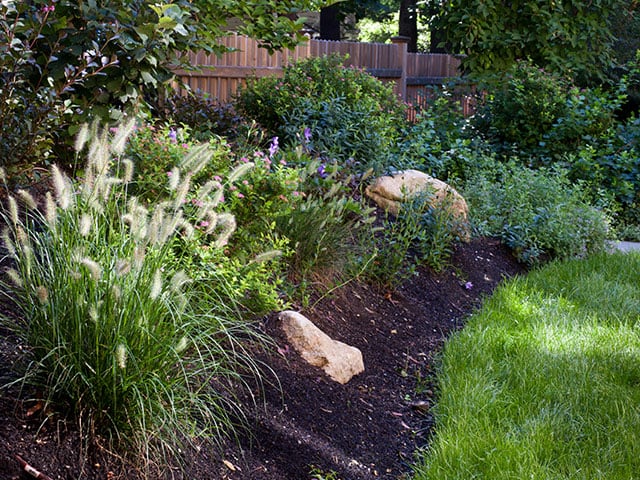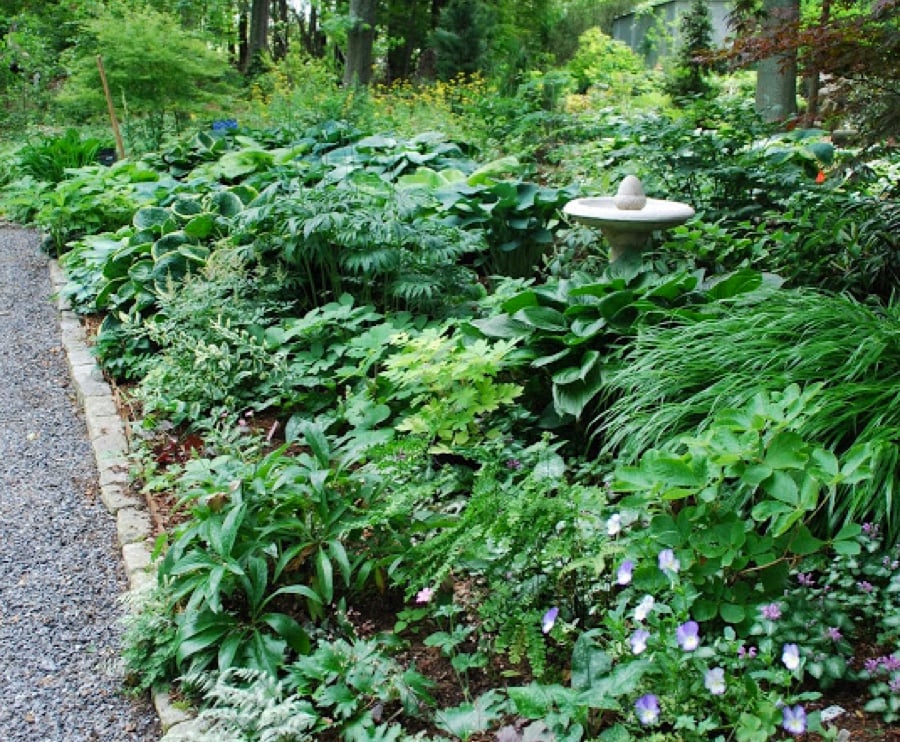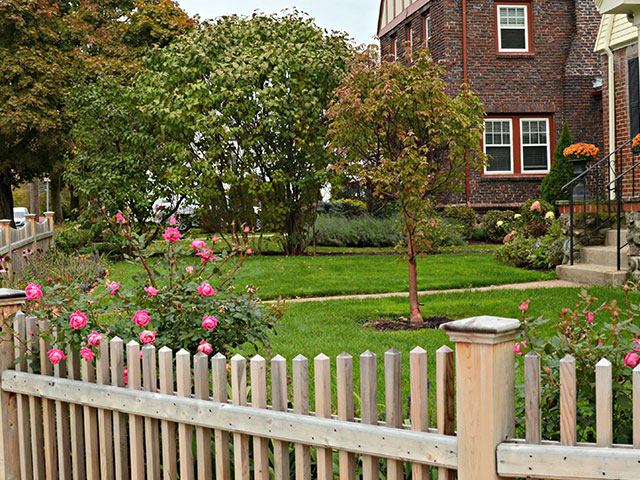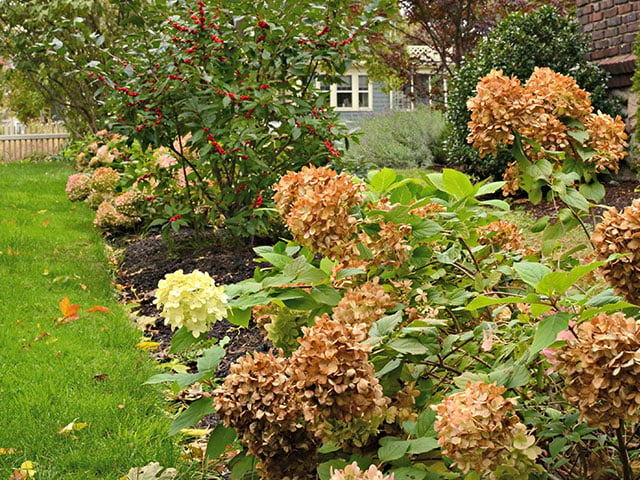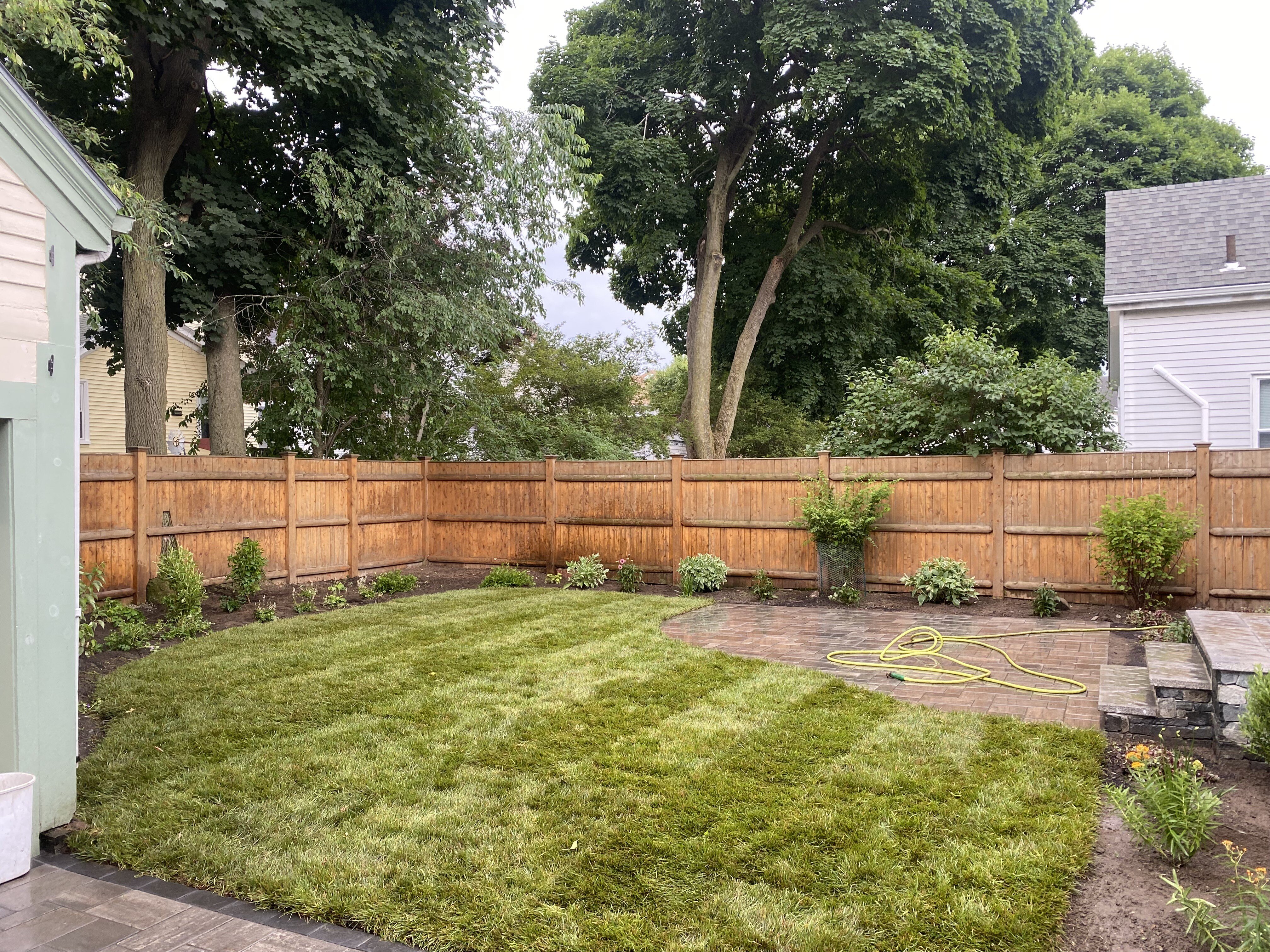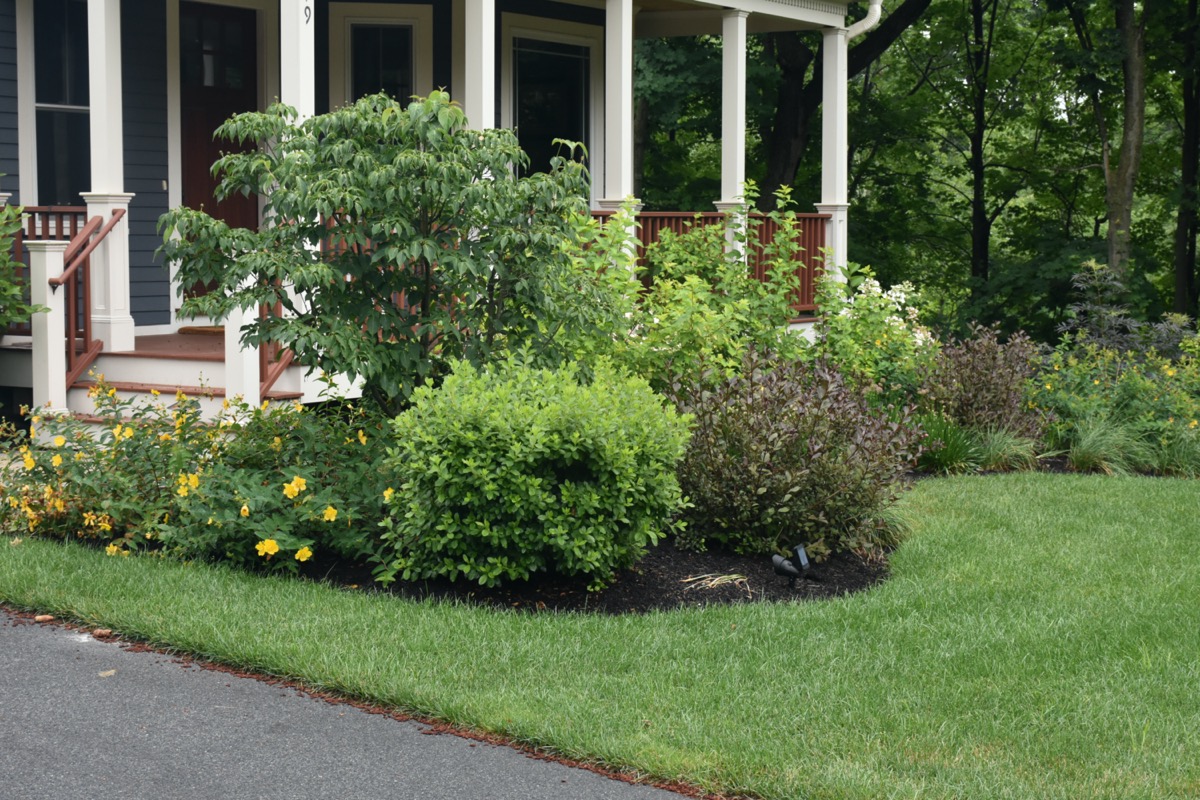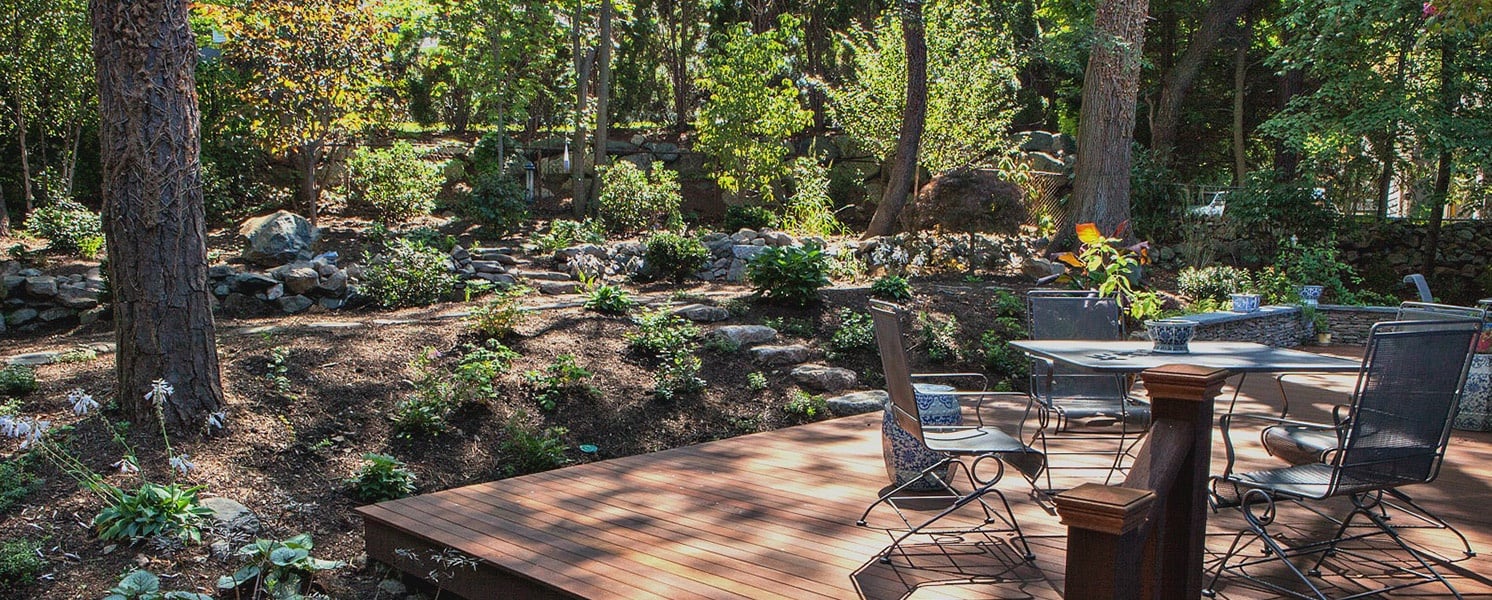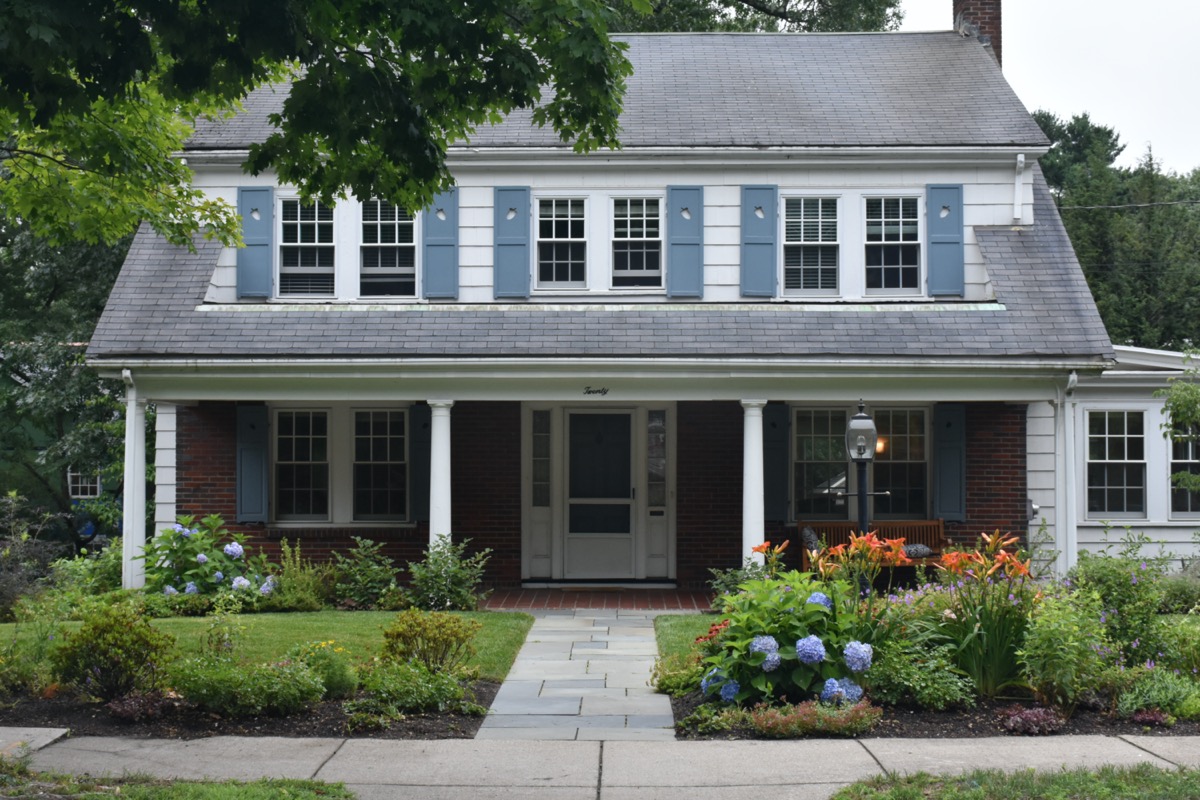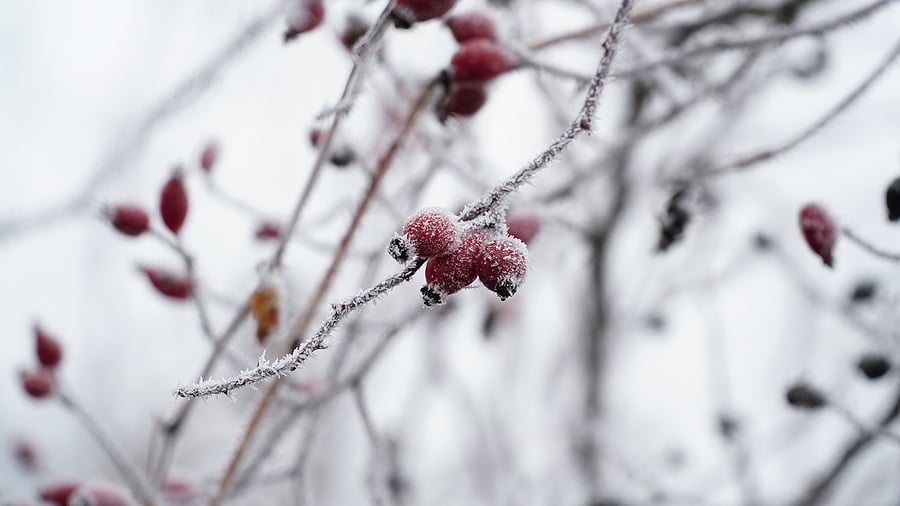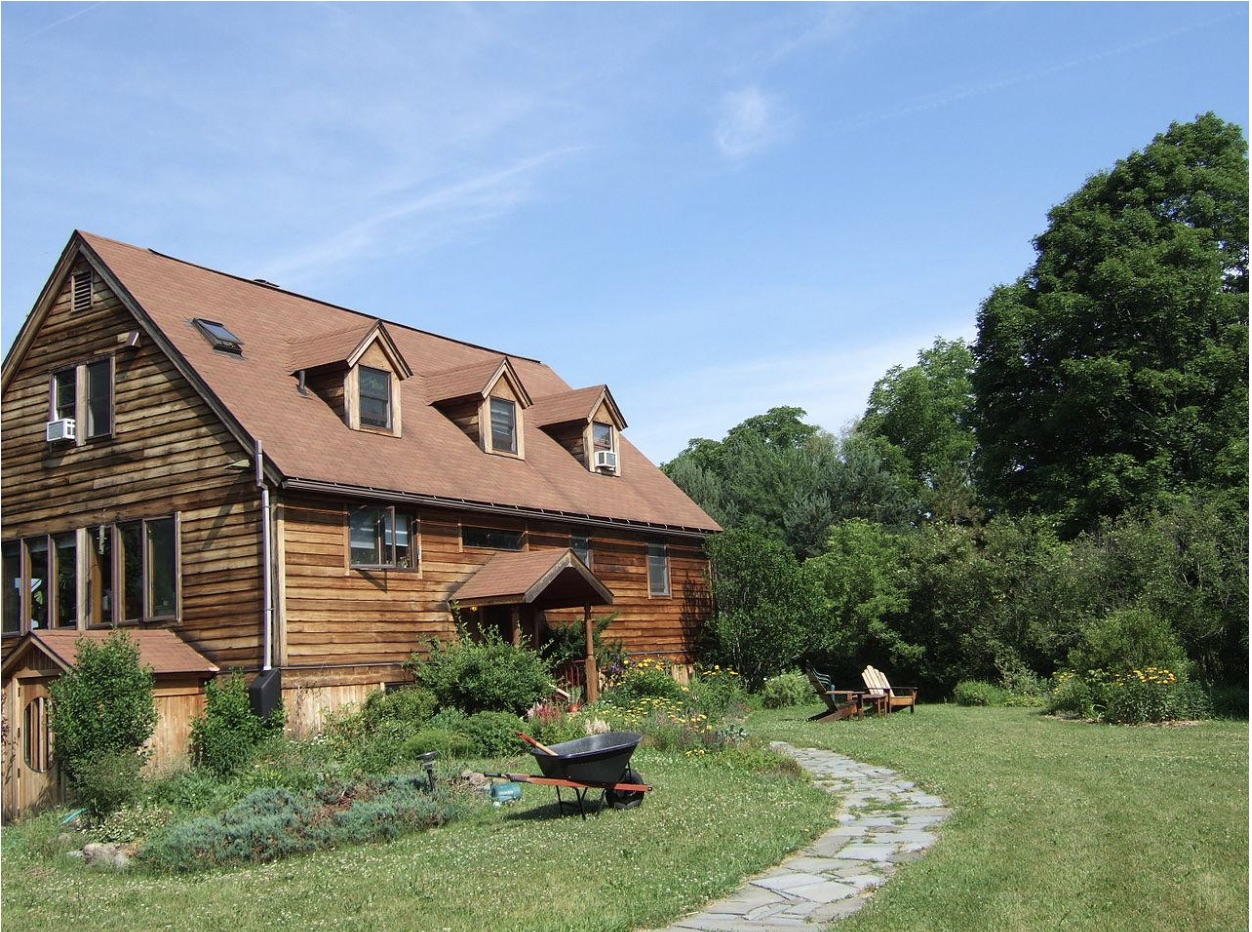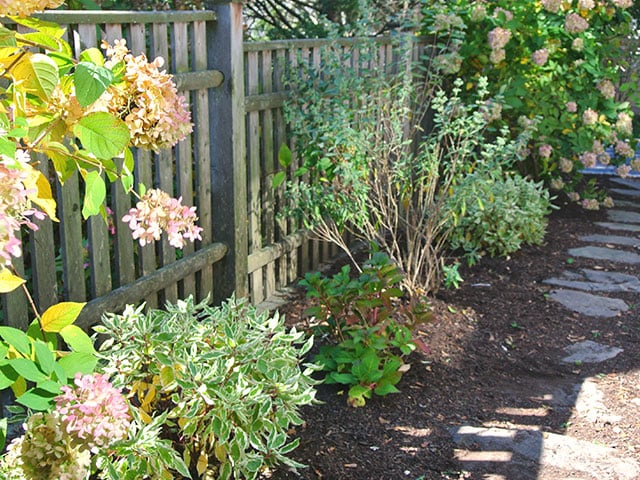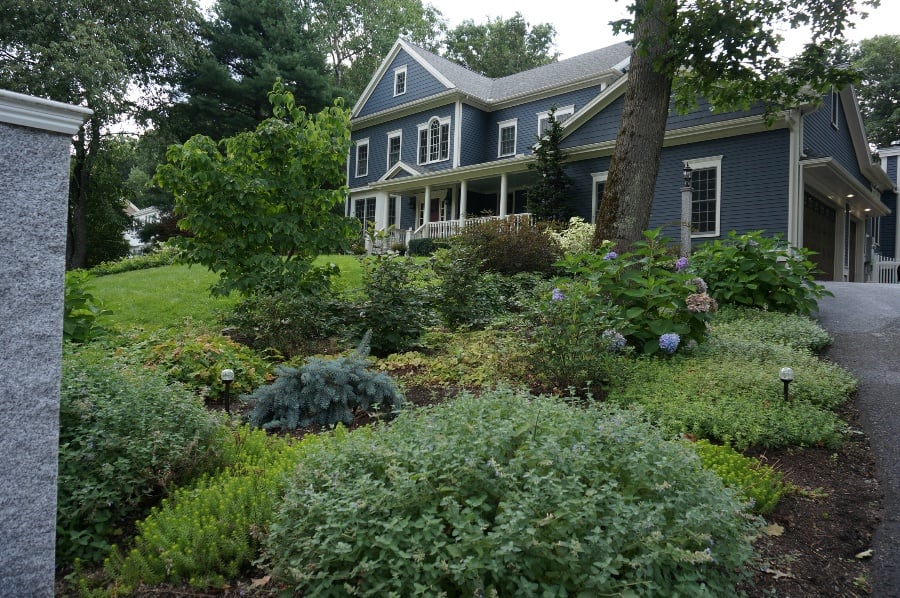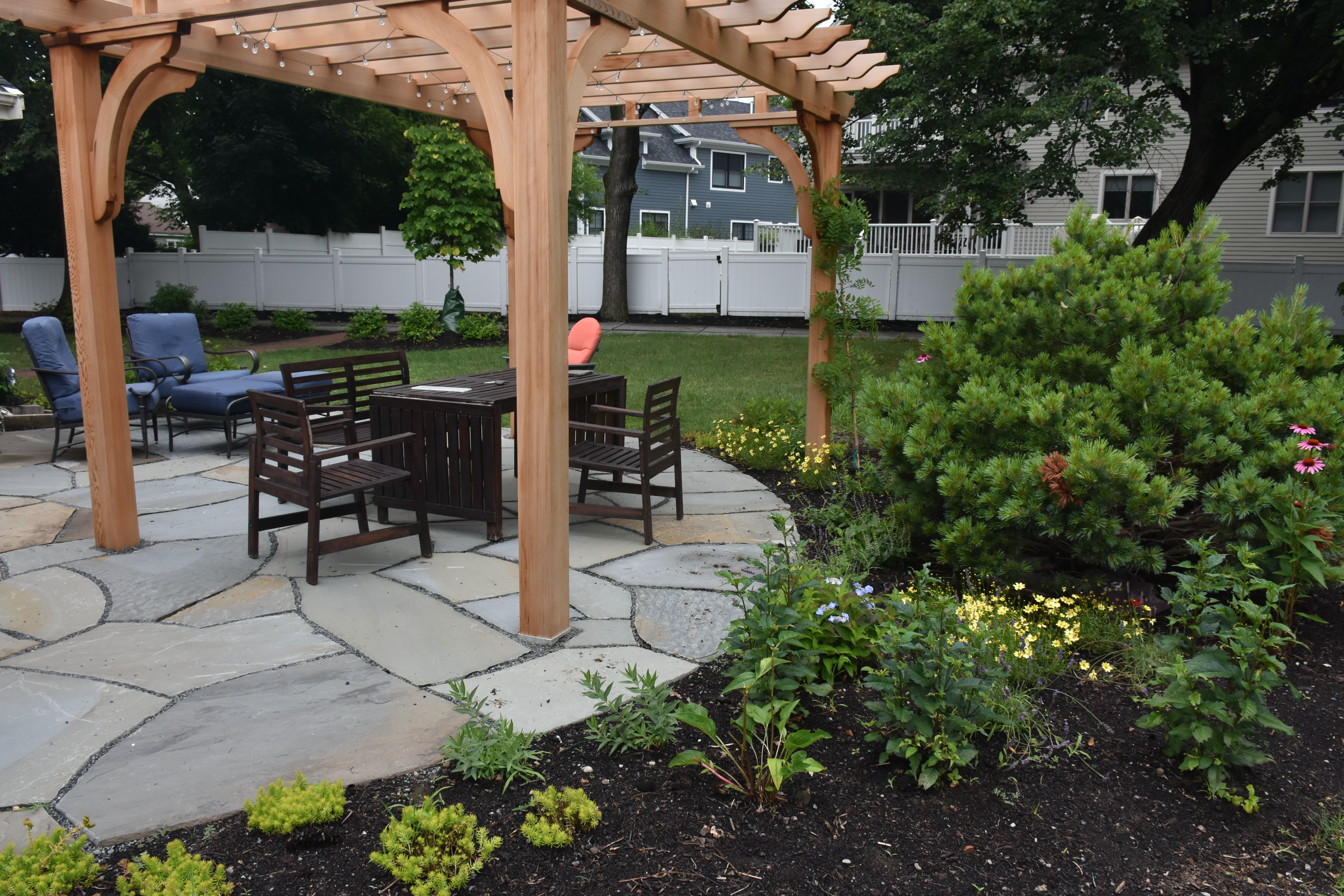The pandemic has forced many homeowners to spend a lot more time at home, contemplating their property and thinking of ways to improve it to add both value and enjoyment. For some their yards have become a refuge from the stress and anxiety of these uncertain times, and they’re considering how to make their backyards an oasis of calm and a more comfortable place where they can relax with family and friends.
If this sounds like you, and you’re trying to figure out how to get started on a landscaping project, you’ll find some tips and suggestions in this article to help make the entire process less overwhelming and more enjoyable. After all, isn’t the whole idea to create more joy in your yard and your daily life?
To get started, think about your landscaping project in three phases: planning, preparation, and production:
1. Planning your landscaping project
Start slow. Live with your yard for a little while, sitting and enjoying it from several vantage points. Walk around. Are there areas you prefer? Do you have kids or pets that need play space? Are there natural features that prohibit or encourage some kind of development, such as putting in a garden, shrub bed, or a hardscape of some kind?
As you get a better feel for the space you’re thinking about landscaping, look for focal points – a feature such as a beautiful tree or group of trees, a large rock or boulder, an existing garden bed, for example. Then begin imagining what you could do to enhance that focal point, perhaps put a walkway in to it or a place to sit and enjoy it. Enhancing a focal point is a great trick for making a small space look bigger and a big space more cozy.
At this point, you might be getting some basic design ideas. To help organize them, consider the three basic landscaping features that you might incorporate into your landscape:
Garden beds
Whether you’re planting shrubs, flowers, trees or a combination of them, pick plants that will provide color and interest throughout the year. Also avoid the temptation of selecting plants because “they’ll look nice in our yard.” If they are not suitable for the local environment, they’ll struggle to survive and probably die, sooner or later. Instead choose native plants or ones that are equally suitable for your hardiness zone – your state or the federal Department of Agriculture has hardiness zone maps you can consult.
Select plants that complement each other, with colorful blooms and foliage that reach peak at different times throughout the season so that you can enjoy near constant color and visual interest. Even in winter, the shape, size and bark color of certain trees and shrubs can provide an attractive view.
Regardless of the plants you choose, it’s always a good idea to first assess your soil condition, including acidity, moisture level, nutrient deficiencies (if any) and sun exposure to help you determine what you’ll need to do to help your plants thrive.
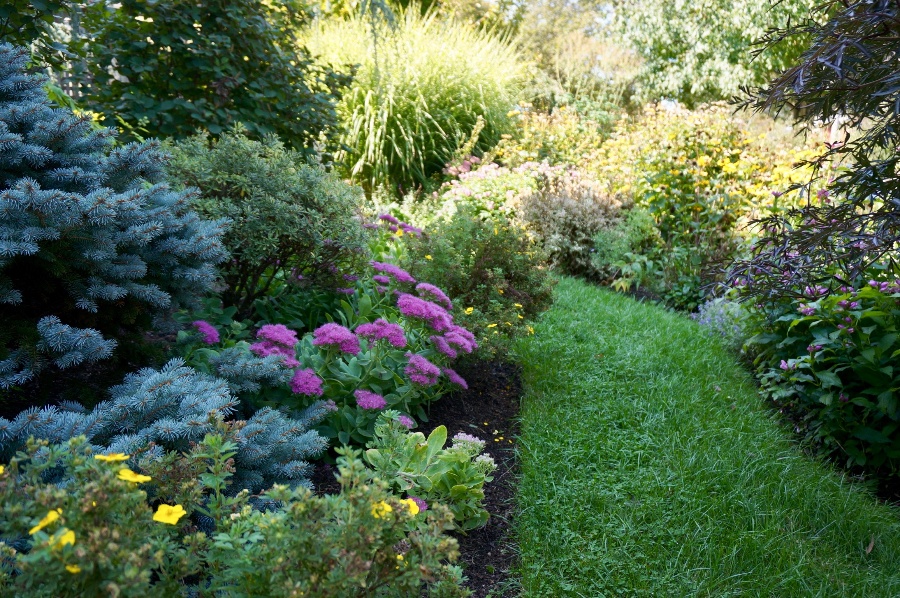
Water features
There is a wide range of water features in an equally wide range of styles, sizes, and price ranges for you to think about, including fountains, ponds, bird baths, and waterfalls, all of which can add a soothing and relaxing element to your landscaping.
Adding motion to the water adds both complexity and cost to a water feature, but the benefits can be more than worth it. The flow keeps the water from becoming a breeding ground for mosquitoes but also adds a beautiful textural sound to your garden. It can be as simple as water gently bubbling over rocks, a light trickle through a meandering stream bed, or the playful splash of a fountain. The pleasing sound of water adds significantly to the sensory experience of your landscape, heightening a sense of relaxation and awareness of nature.
As you look at your yard, where would it make sense to locate a water feature? Complement the natural features of your yard -- is there a secluded nook near where you like to sit and meditate in the evening, or is the open center of your backyard lacking interest? The location and size of your water feature will depend on both how much room you have and what you’re looking for: the space required for a small bubbler fountain is very different than what’s needed for a pond.
Where possible take advantage of available water for your water feature. Is there a spring or existing stream you can utilize? Unless you have a natural source of water that you can tap into, you’ll need to run water to your new feature and electricity for a pump to keep the water flowing. The further away it is from the source, the more expensive it’ll be to install.
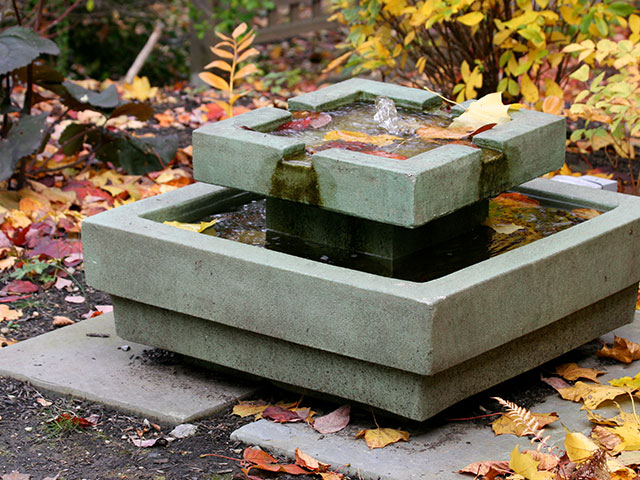
Hardscapes
Hardscapes, designed and constructed properly, can complement and enhance natural features to create a seamless, balanced, and peaceful landscape. These man-made elements, such as walkways, patios, firepits, and walls are important parts of the ideal, integrated outdoor living space. Hardscapes can add balance and harmony to your organic space, but creating them comes with a whole different set of concerns than building a vegetable garden or flower bed.
Before deciding where to build your hardscape, first determine exactly what the space will be used for. Consider how easily accessible it needs to be -- how close or far away can it be from your home for functionality? For example, if you need to transport food back and forth during a family barbecue, build a patio as close to the kitchen as possible.
Think carefully about the shape of the hardscape you’re contemplating. We’ve all drooled over those beautiful patios and walkways with sinuous lines that curve sensuously, attracting the eye and integrating harmoniously with the landscape. But all those curves can add cost because they often require stones and pavers to be custom cut and fitted. The difference between a hardscape with right angles and a rounded or curved one can be significant. These considerations are crucial when establishing your budget, so keep your expectations realistic when planning your hardscape project to ensure a successful finish.
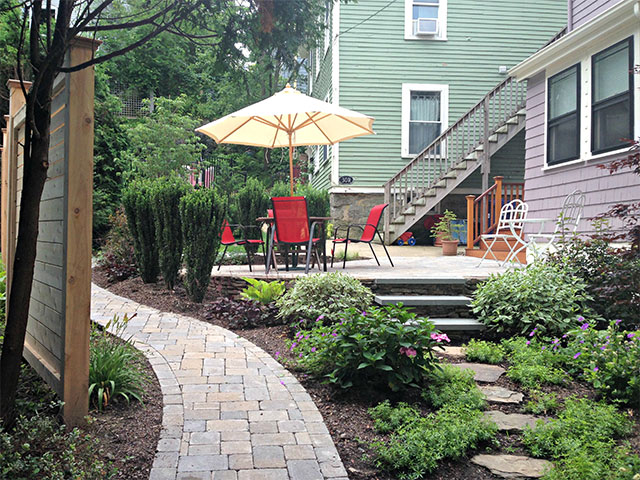
2. Preparing to implement your landscape plans
Once you have your landscaping plans in hand, it’s time to consider the materials you’ll need to get and tasks that need to be tackled as you get ready to stick a shovel in the ground.
If you’ve decided a water feature is just the thing to really enhance your yard, what kind will it be? Here are three classics you may want to consider:
- The cored stone fountain can be an elegant option for a fountain. If you want a modest but meaningful water feature, you can pick a large rock or two that you like, make a one-inch core in the middle and create a simple fountain that recirculates the water. Here is what one person did to build his stone water fountain.
- A pond is perfect for a larger yard. Even if you have room for a large pond in your yard, you’ll want to make sure there’s a way to keep the water moving, whether it’s a feeder stream, a fountain, or a circulating pump. Flowing water helps provide oxygen and nutrients to any plants or animals that you may have in the pond while helping the water stay fresh and clear.
- A pond-free waterfall is perfect if you like the idea of a waterfall but don’t have the room for a body of water in your backyard. You can even buy kits such as this one if you want to do it yourself. These may sound complicated, but it only requires a protective liner, pump, spillway box, basin, and some piping.
If a hardscape of some kind is in your future, deciding on the type of stone to use is more involved than simply making a trip to your local garden center and picking a set of beautiful pavers. There will be stone that you think looks fantastic, but is out of your price range, or may not quite fit the space you’re planning. On the other hand, a stone or paver that you might not have initially considered could be well within your budget and match your needs perfectly.
A few common types of stone to consider for your hardscape include:
- Pea Stone - This versatile stone, also known as pea gravel, is often used in commercial settings, but it’s easy on the budget for the homeowner as well. Pea Stone is about an eighth of an inch in size and smooth in texture, so setting a solid foundation of compacted soil and stone dust and surrounding the area with a steel edge is important for keeping it in place.
- Bluestone - A type of stone native to the northwestern United States, bluestone comes in multiple colors ranging from blue to gray to green. Shapes can vary from a straight-edge square to irregular pieces similar to fieldstone. Bluestone can be set on a sand foundation and provides a nice flat surface for patio furniture.
- Brick - A clay paving stone that is used in a variety of structural and hardscape projects around the world, brick is long-lasting and easy to install. The natural and traditional look that brick provides makes it a favorite among both landscaping companies and DIYers.
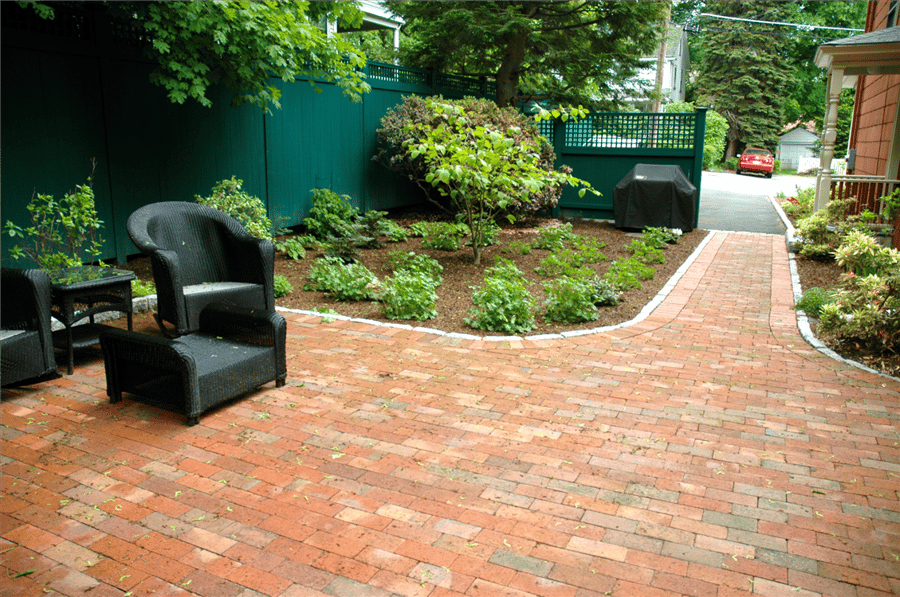
Here’s a pro designer tip: To create a beautiful pathway, patio, or wall, enhance its visual interest by using a wide variety of stones that complement each other. Explore different types of natural stone such as Goshen stones, field stones, blue stones, granite, or even newer blue mist granite. Using rock where possible – or combining it with manufactured pavers – provides a unique and more creative touch while keeping it natural for a more soothing and healing effect.
Speaking of natural components, here’s another unique suggestion – consider using moss in conjunction with your hardscape as well is in your general landscaping. That’s right, moss. Aside from its pleasing aesthetics and natural beauty, you'll find that either having a bed of moss or even using moss as a yard replacement has many benefits including:
- It’s easy to establish
- Durable
- Perfect for shady areas
- Easy to maintain
- Soft and relaxing
The stark contrast of lush, green moss next to hard stone is hard to beat for beauty and visual interest.
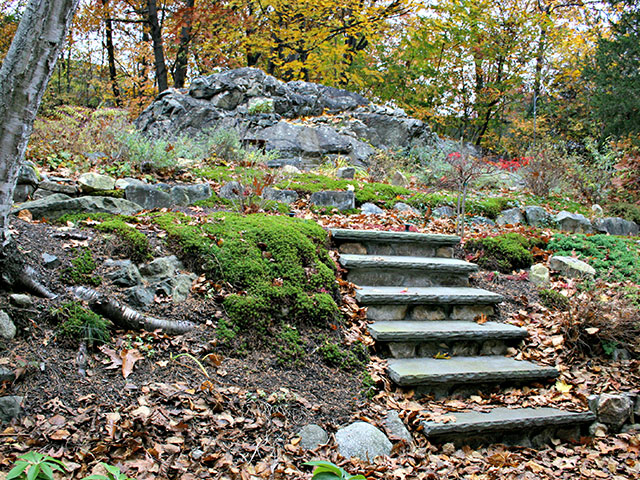
3. Producing your landscape project
Think of producing your landscaping design as a construction project, because that’s exactly what it is. Just as in building a house, you need to prepare the site. From preparing the soil and defining the beds for flowers and shrubs or digging the channels, pools or other elements for your water feature, it’s important to be aware of the number and order of tasks necessary to successfully complete your project. Depending on the style and attributes of your water feature, you may have to trench and lay tubing and cabling to run water and electricity to its location, as well as install pumps, filters, and circuits before you can install the actual feature itself.
As with all other construction projects, establishing a solid foundation for your hardscape is key for making it sturdy and long-lasting. Creating a spectacular walkway or patio requires more work than just laying some stone and calling it finished. Time needs to be set aside to level the ground and lay in foundations such as aggregate stone, stone dust, or gravel to create a solid base for your hardscape project.
All of this takes time, resources, and certain skill sets. Experience, of course, helps quite a bit. If you are not capable of, or comfortable with, any or all of the tasks required to successfully complete your project, it’s important to partner with a landscaping firm that is equipped to handle it efficiently and cost-effectively.
Moodscapes LLC is an organic landscape design and service company with a focus on helping you extend your life outdoors to enjoy activities on your own, as a family and with friends. We create opportunities for you to commune with and find joy and peace in nature and to live in an ecologically friendly and healthy environment. Please explore our landscape services and the portfolio that demonstrates many examples of our work.
Download our Landscape Design eBook for more ideas and information on transforming your landscape.
